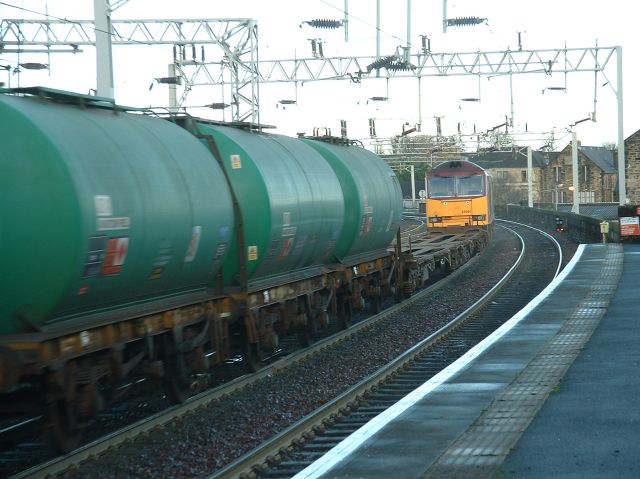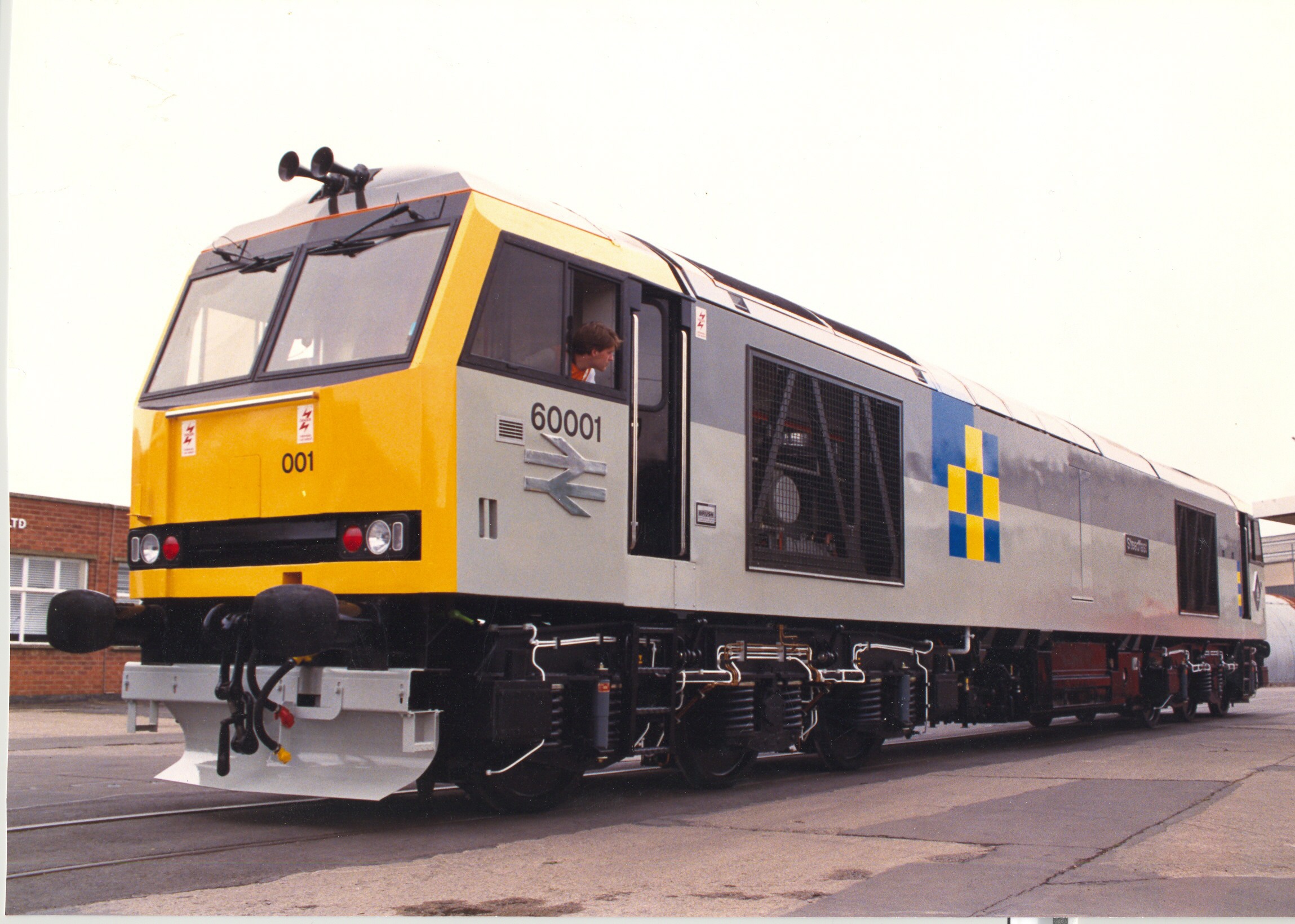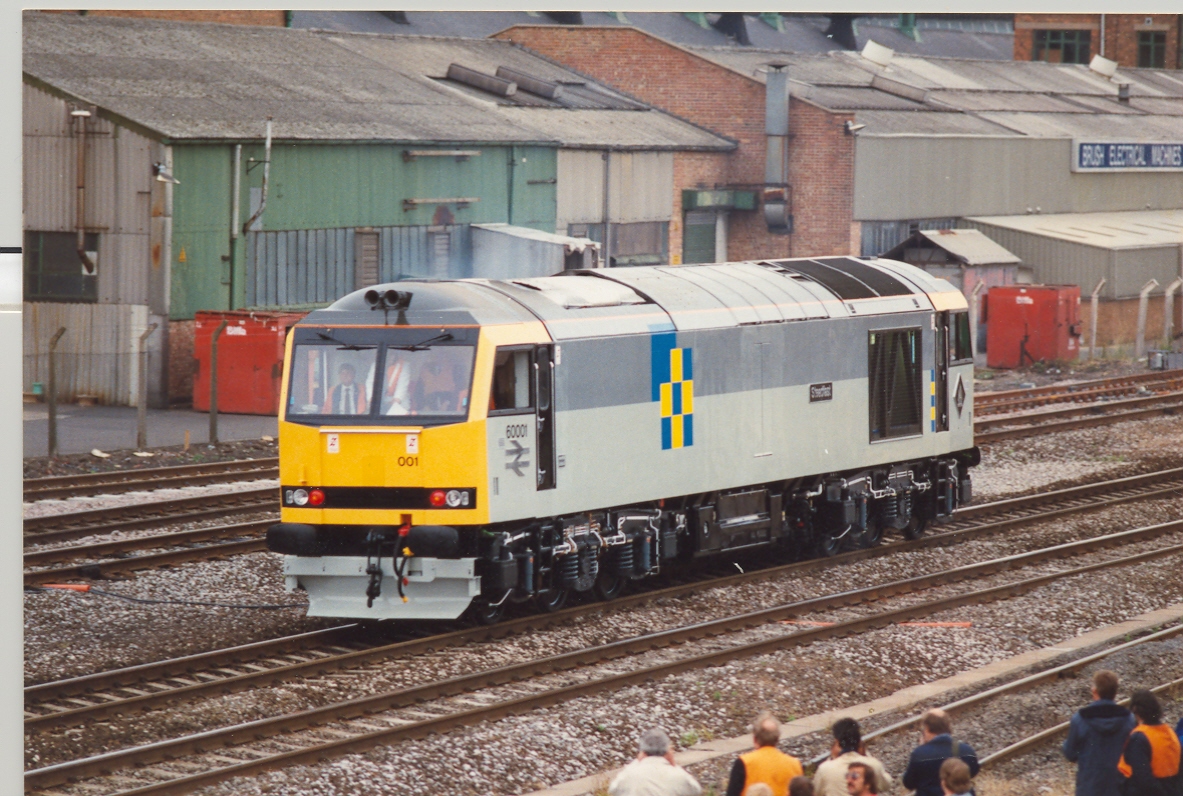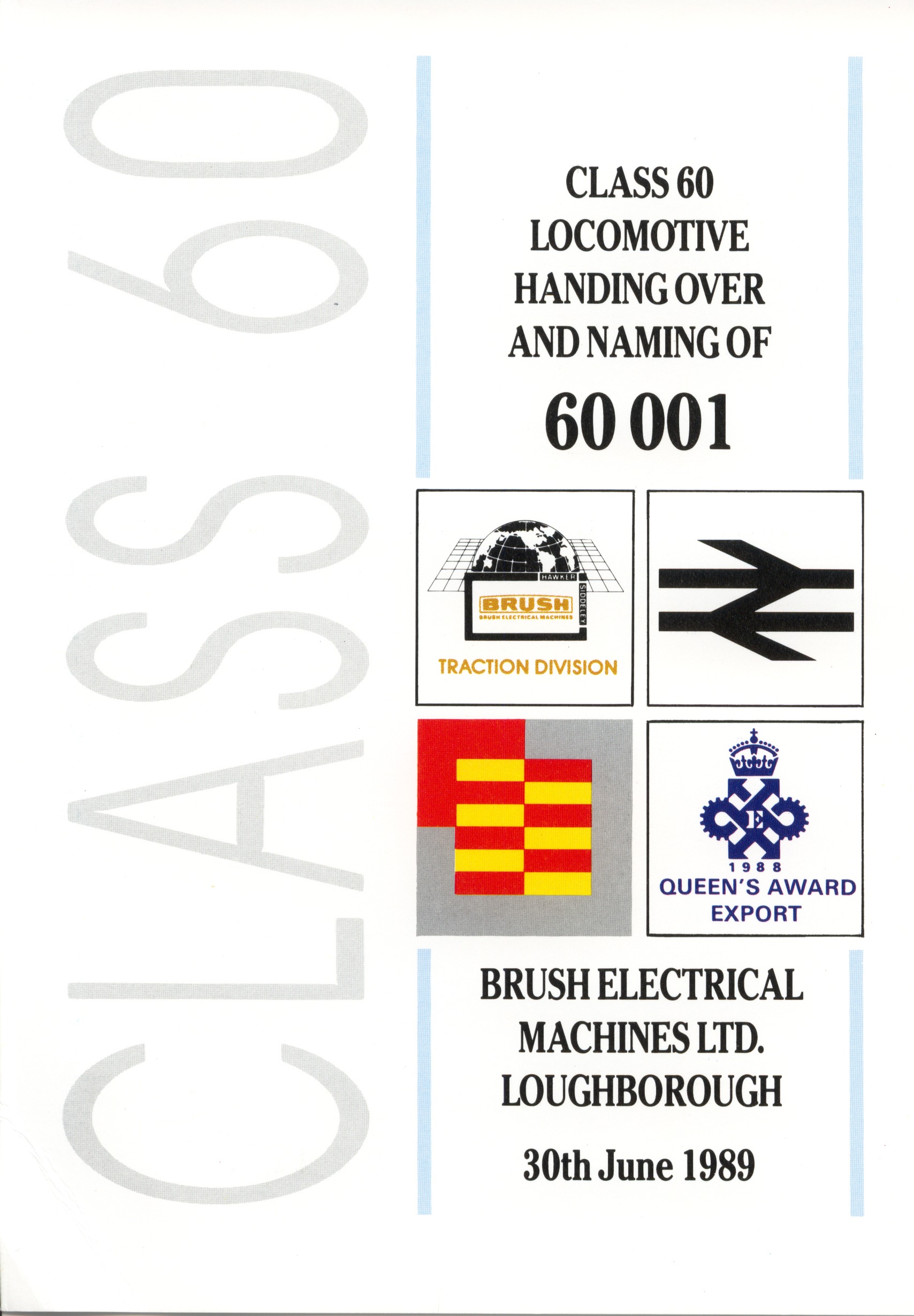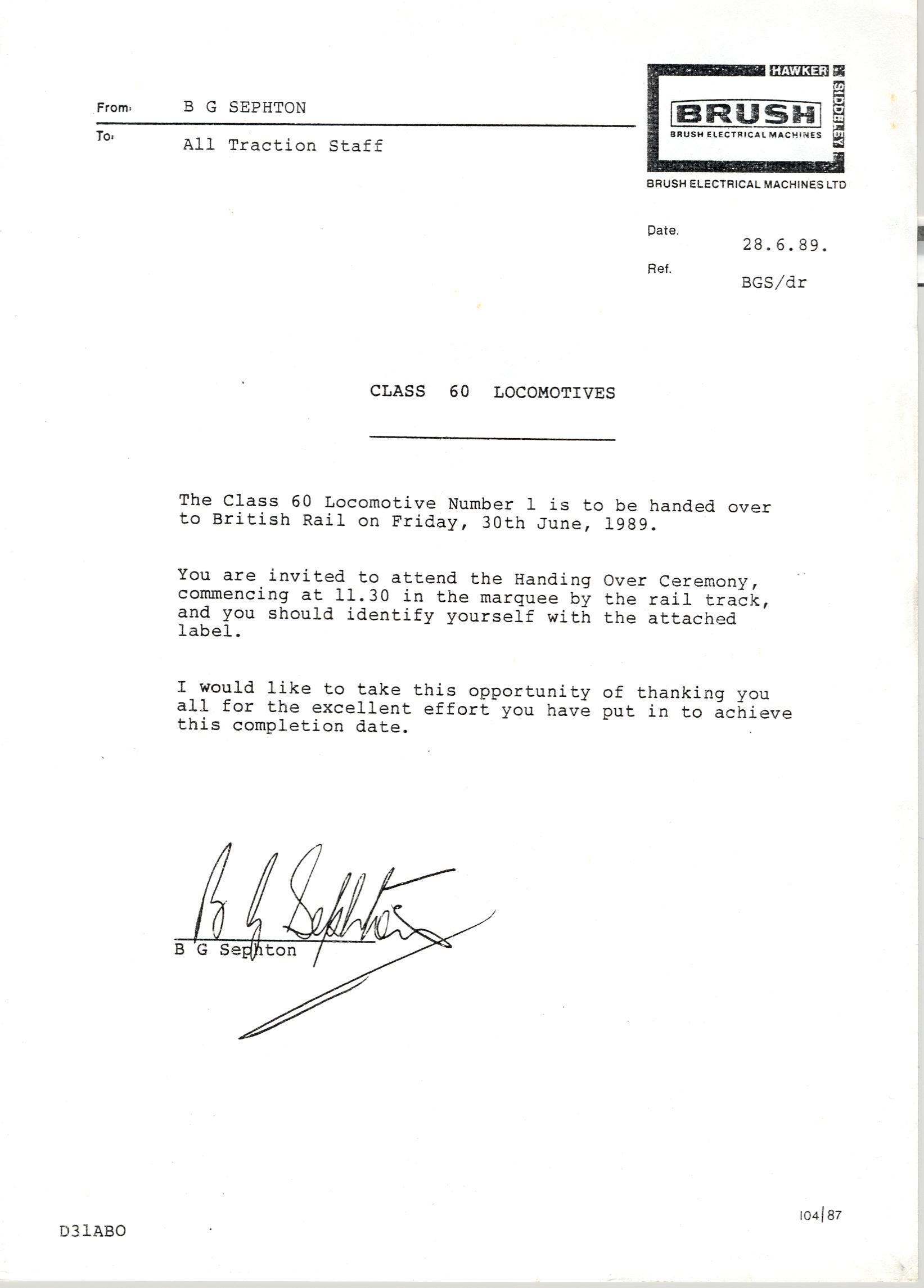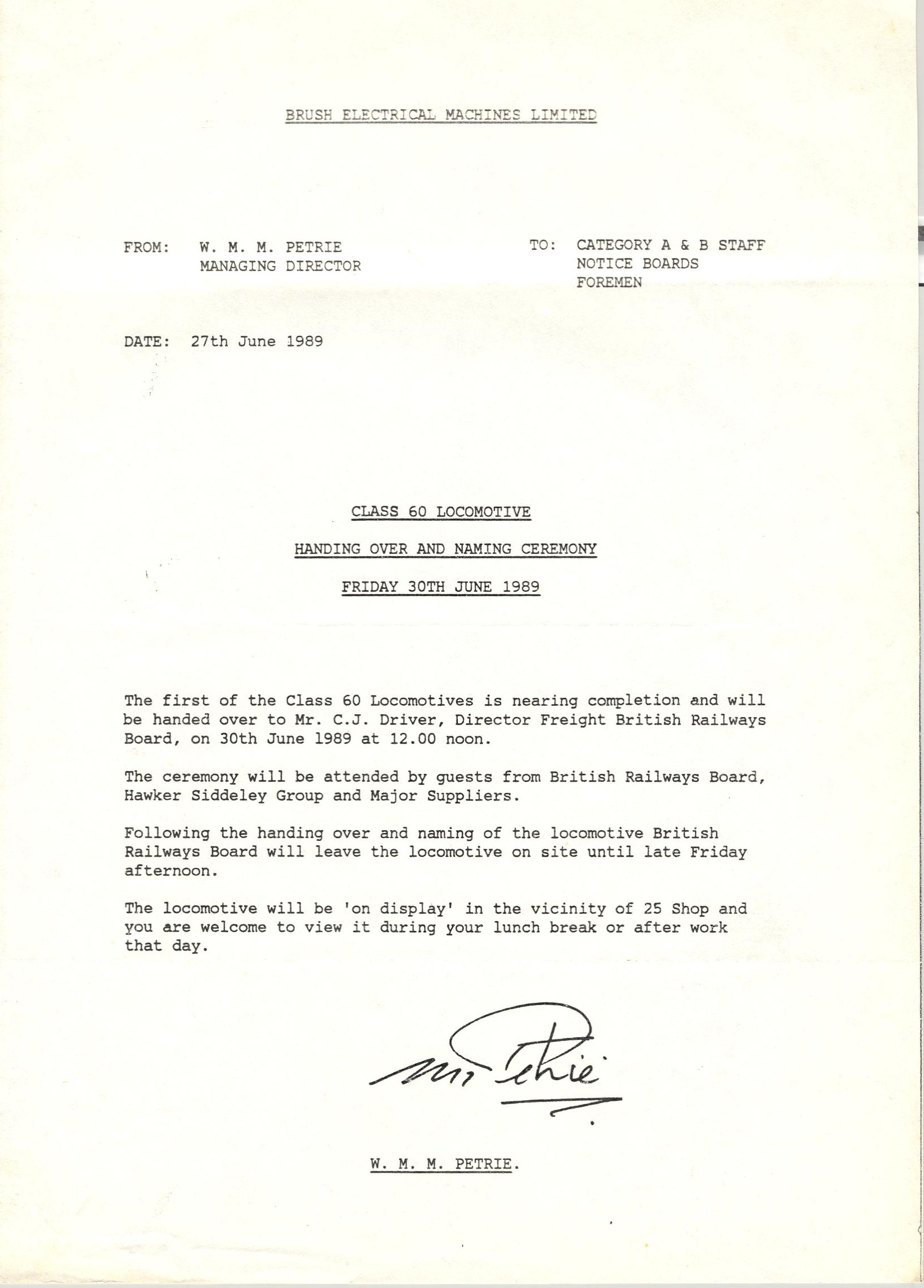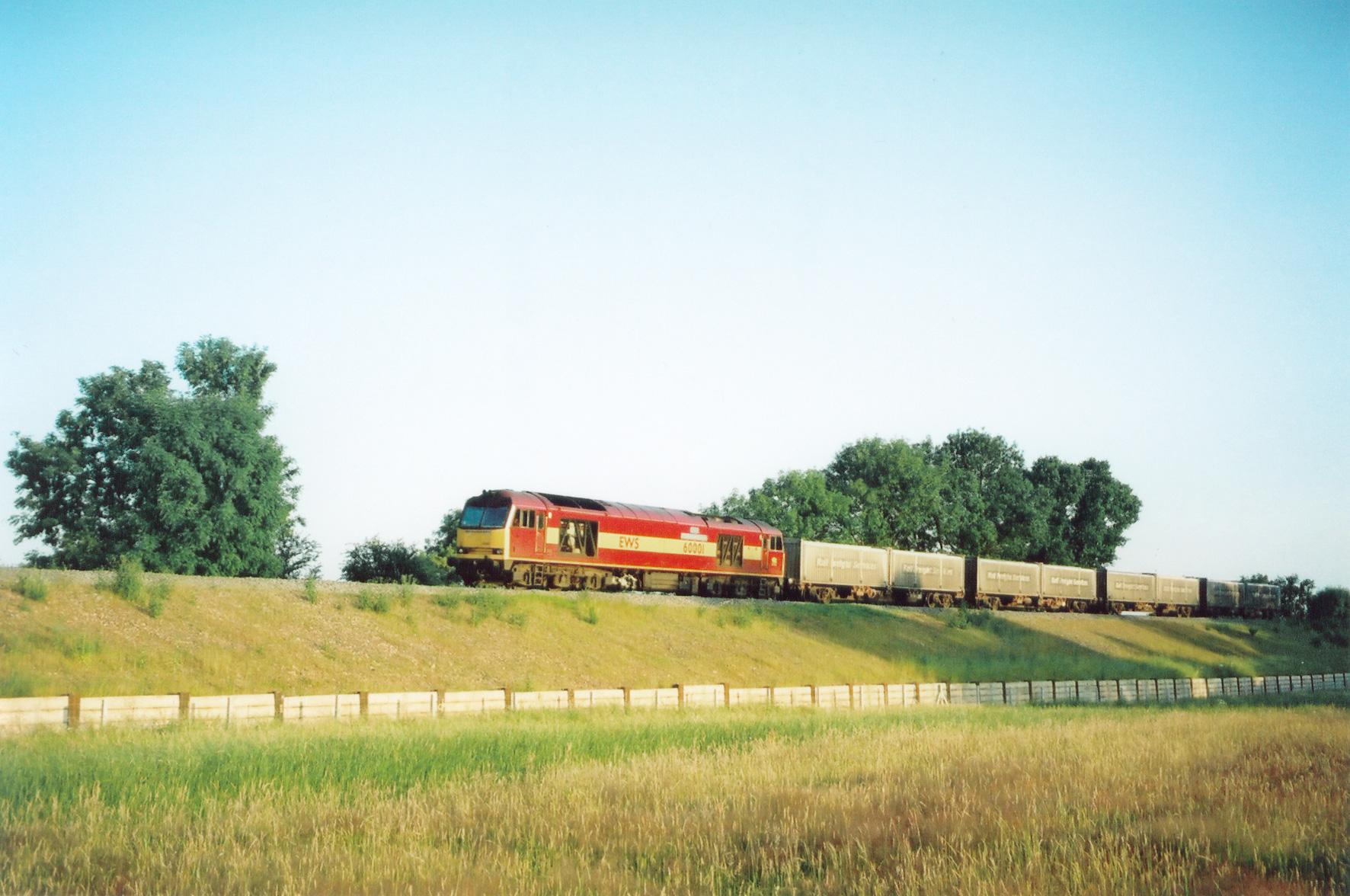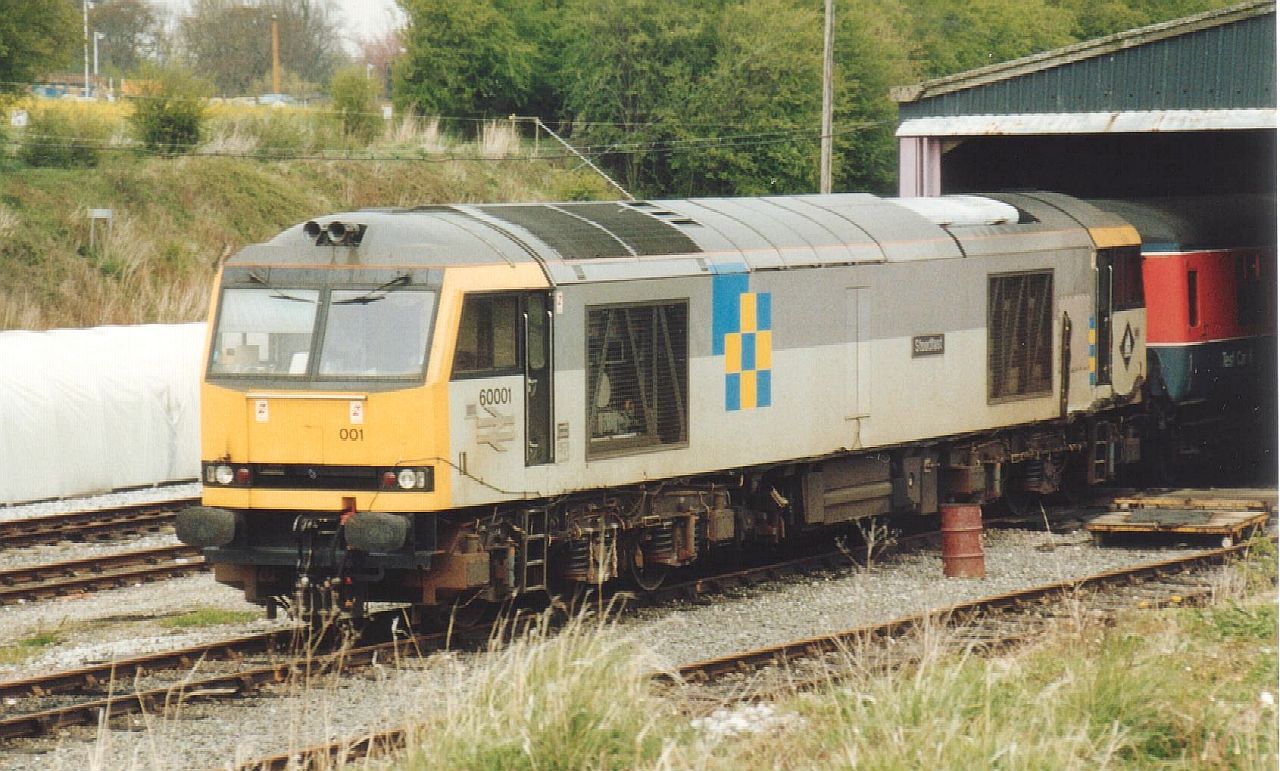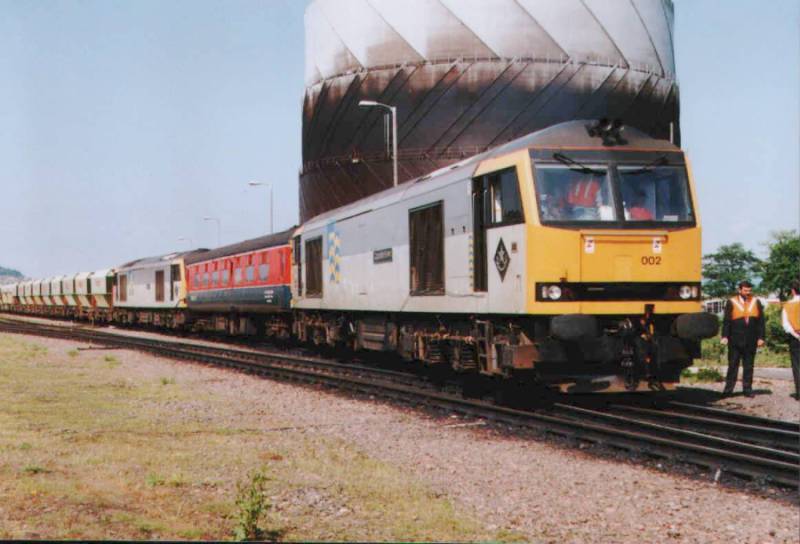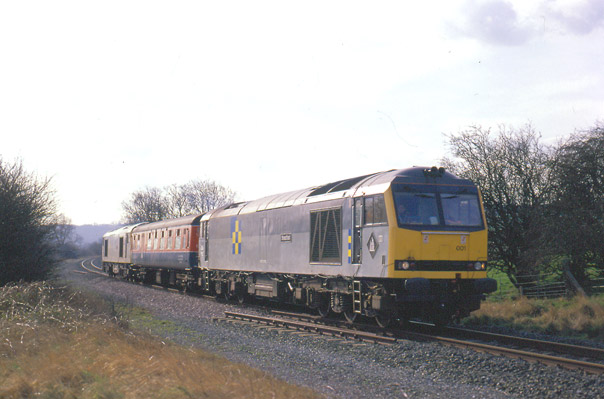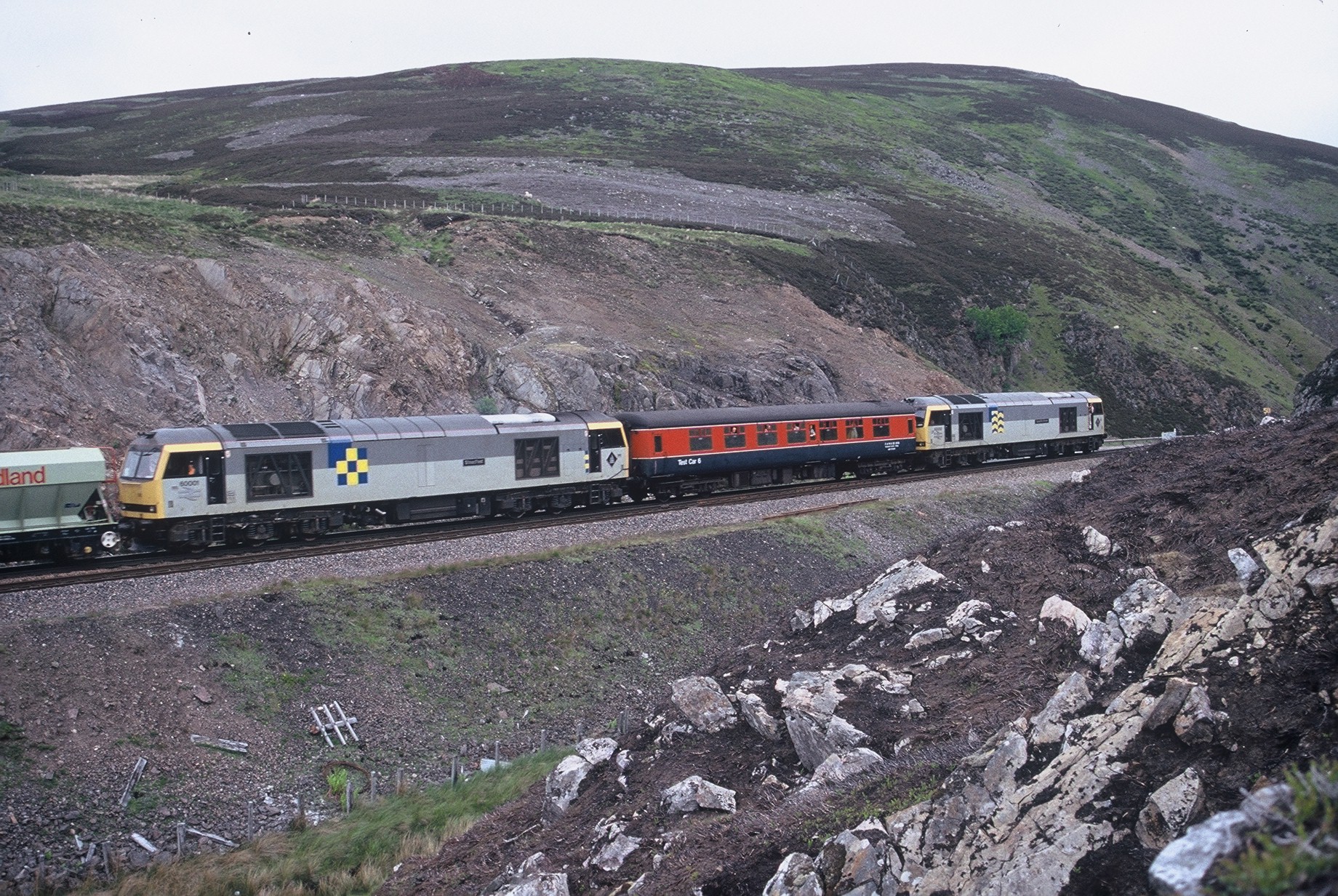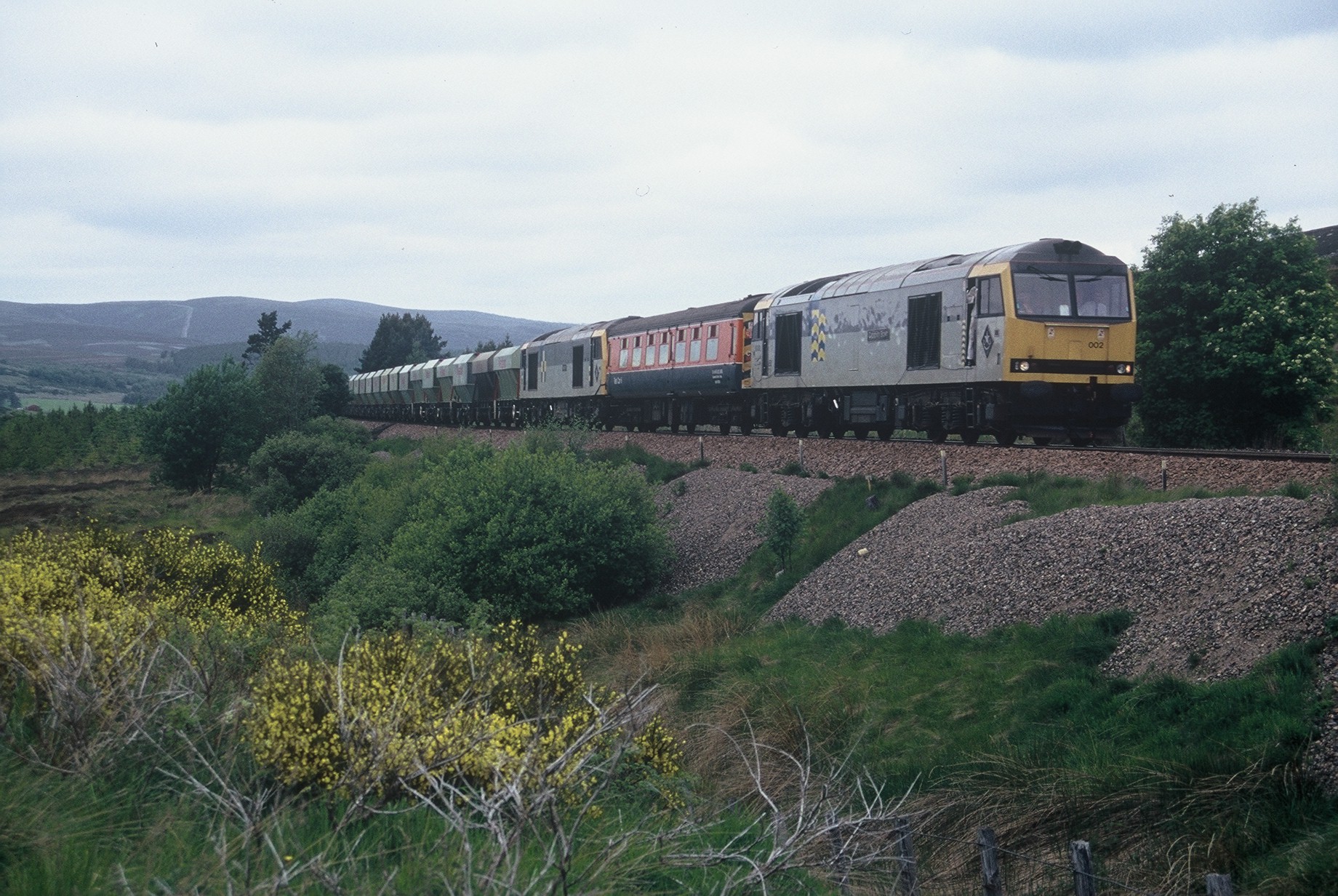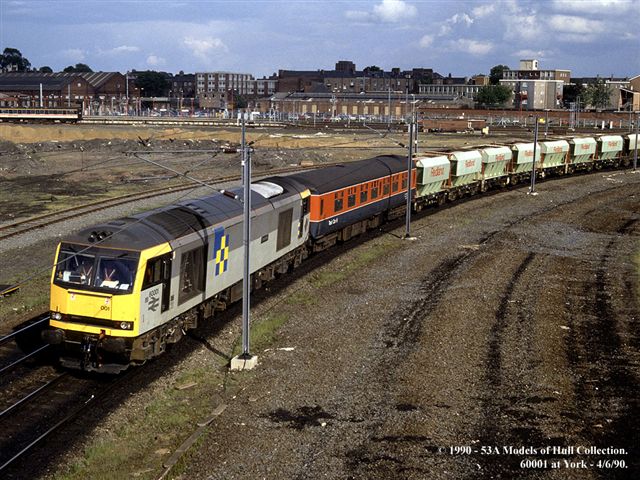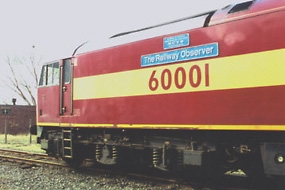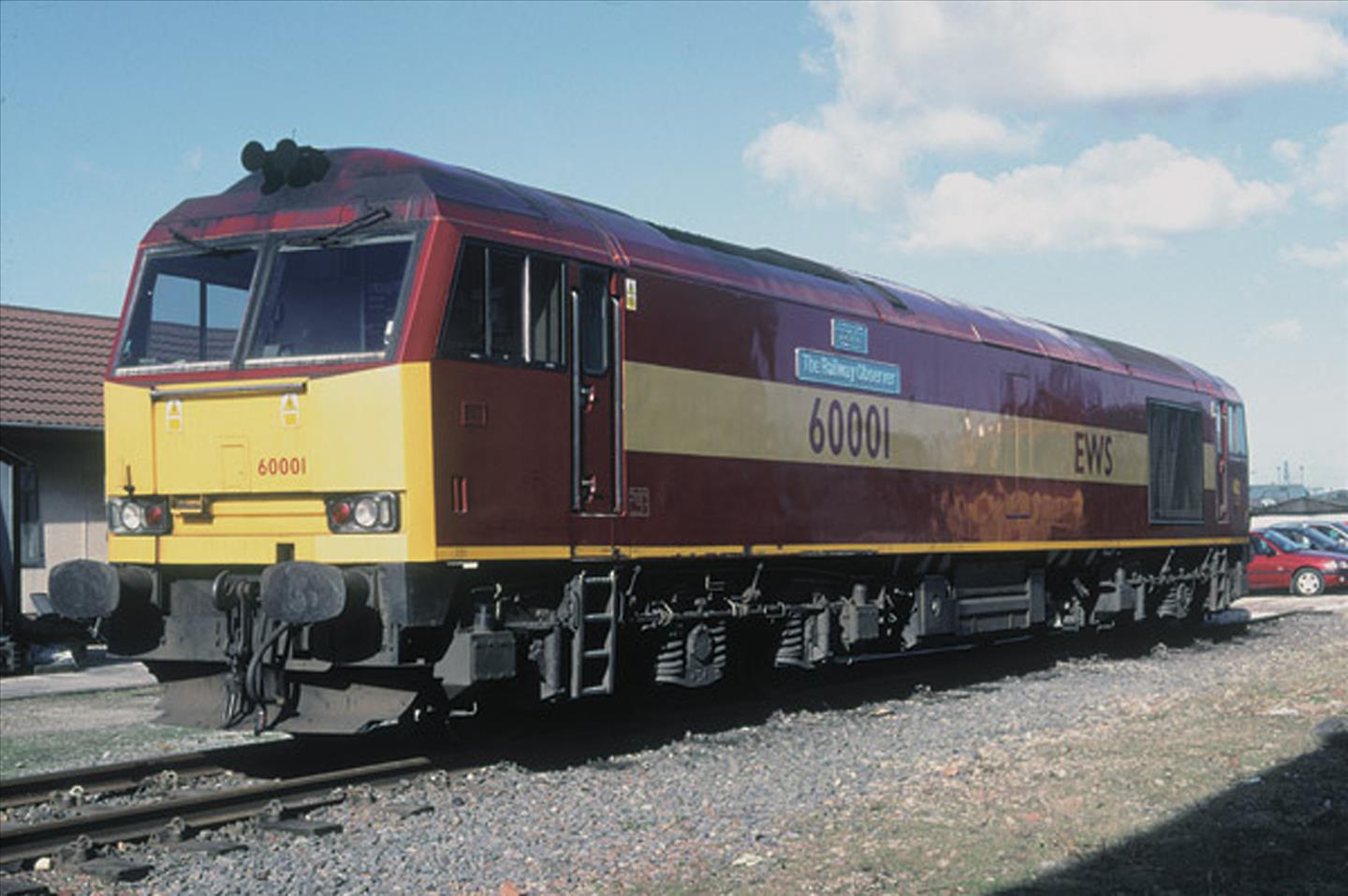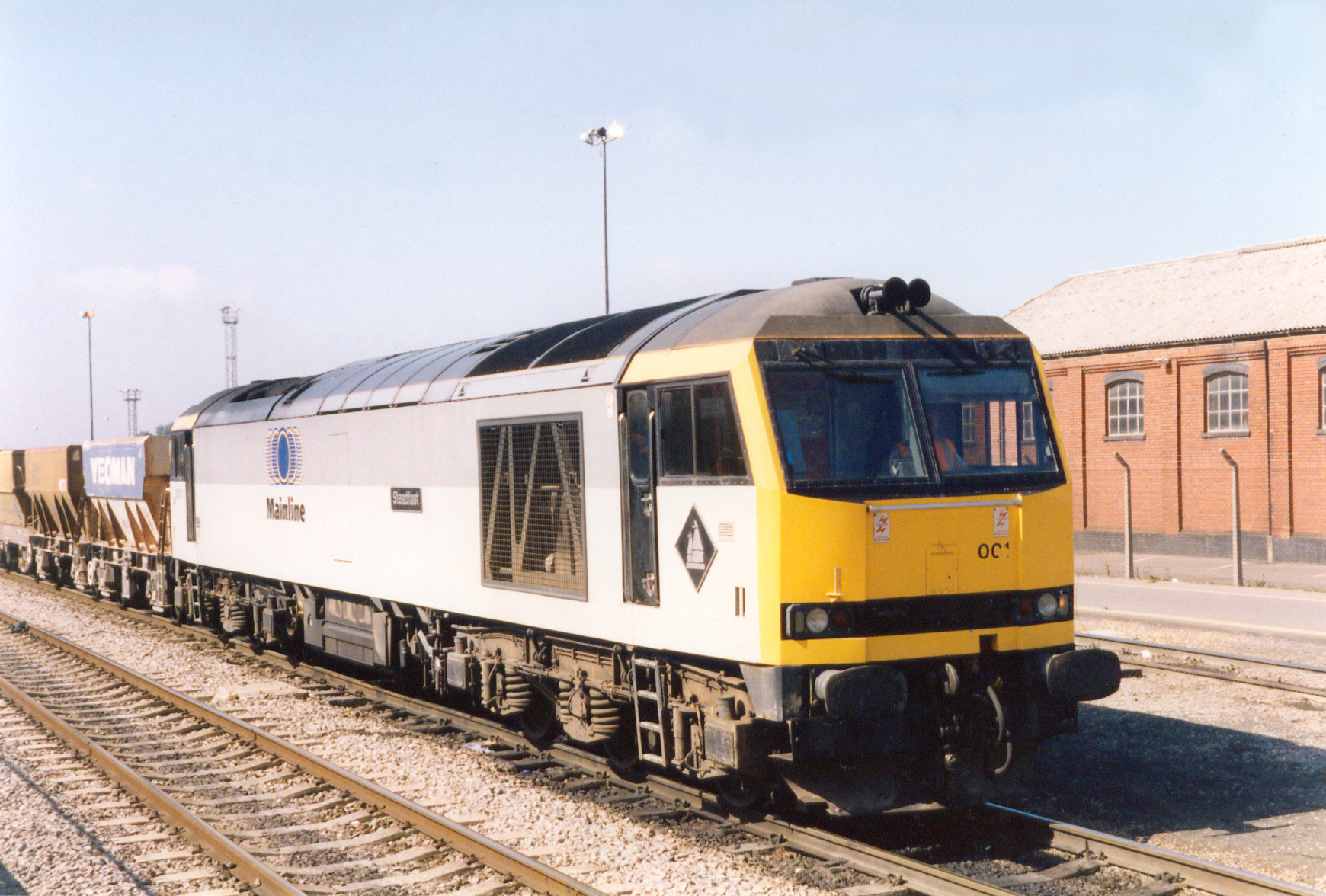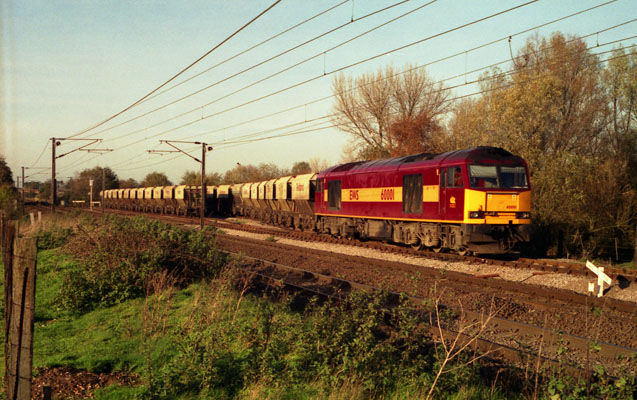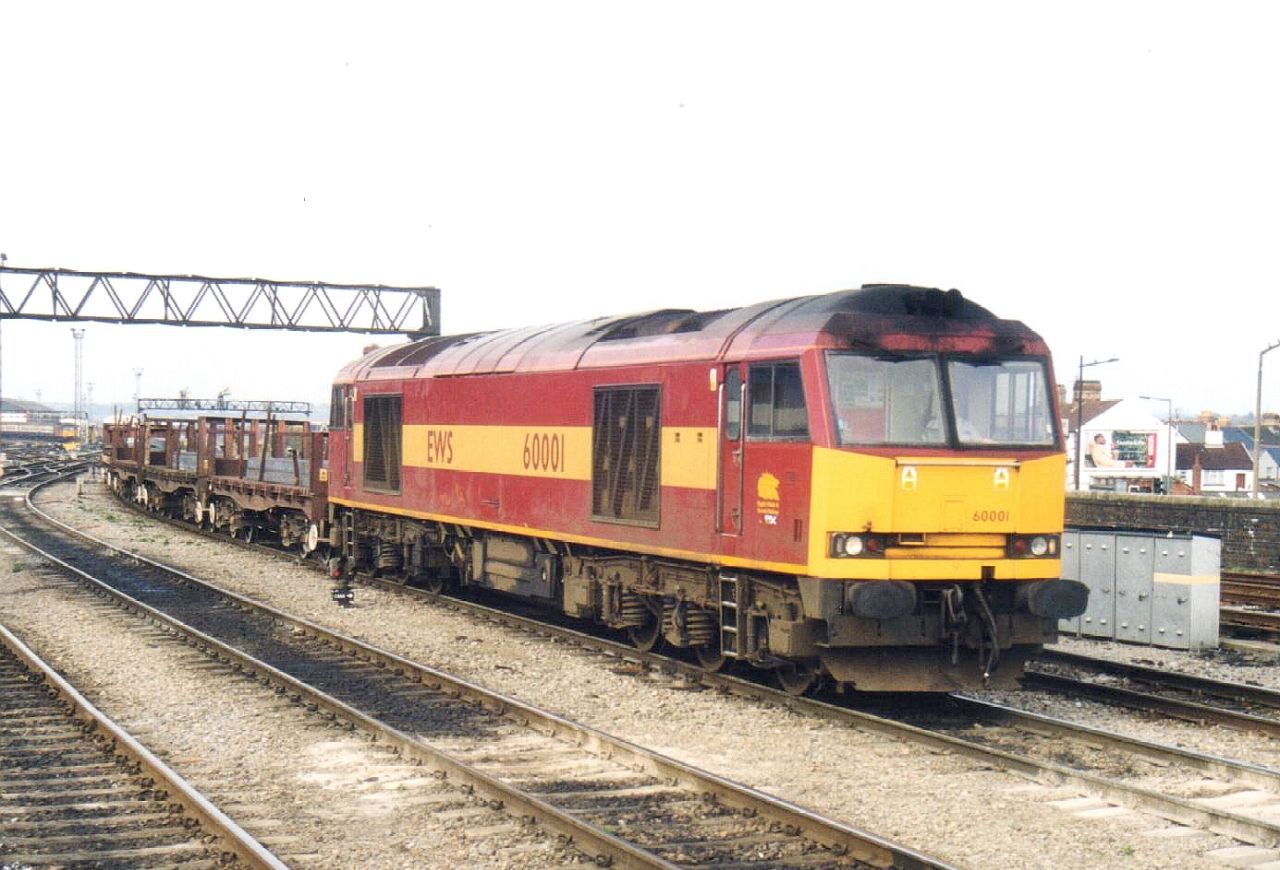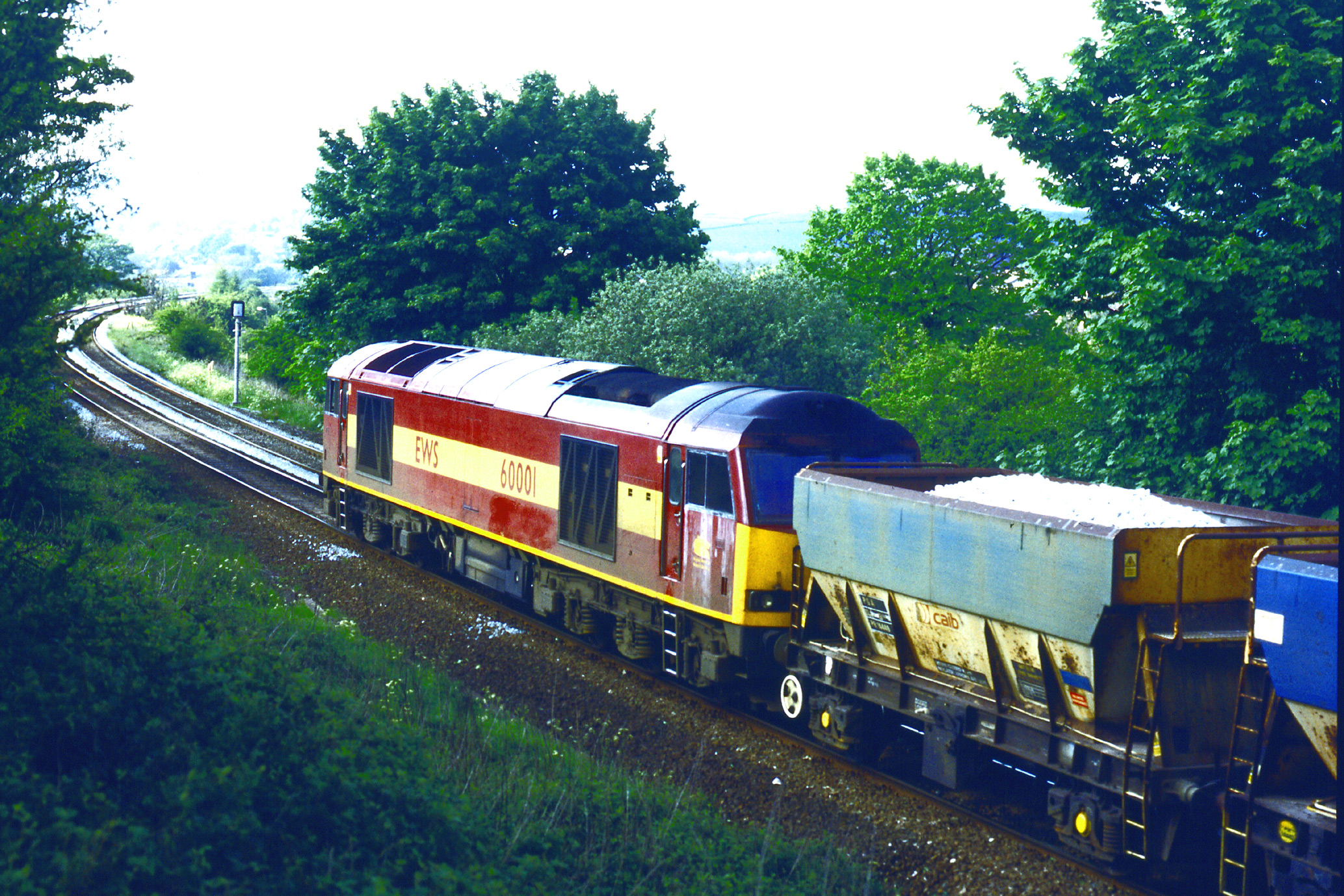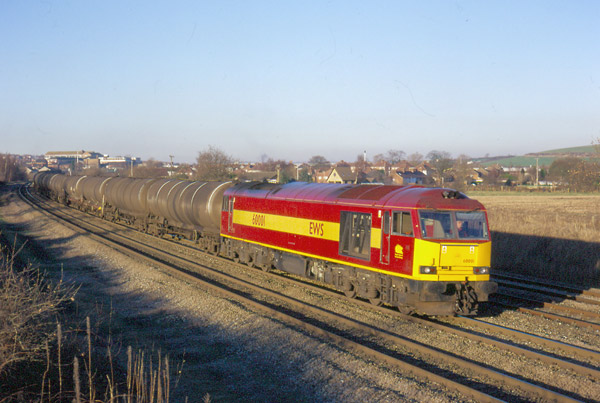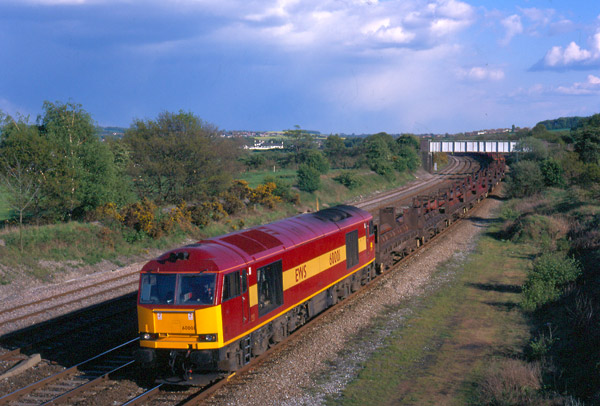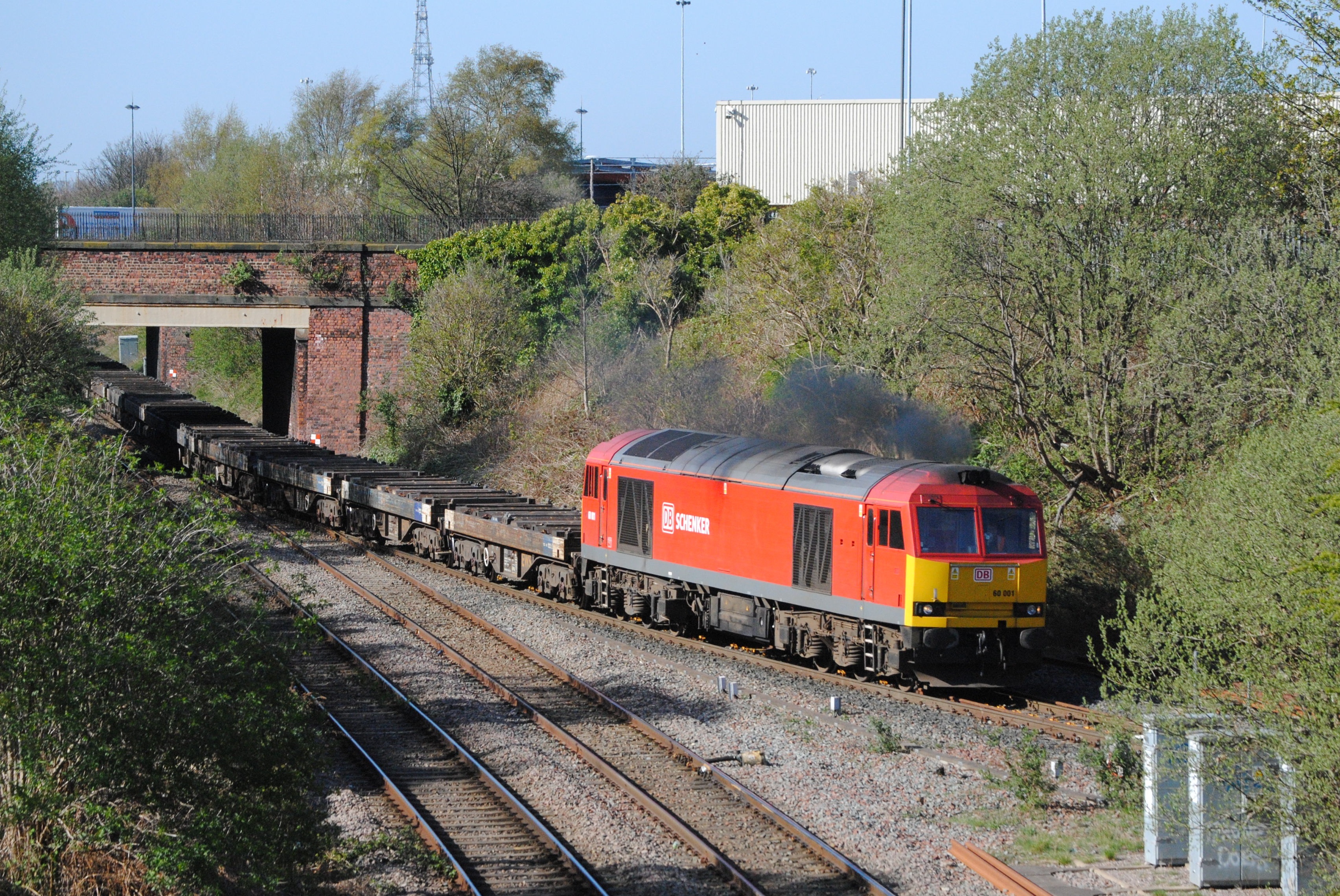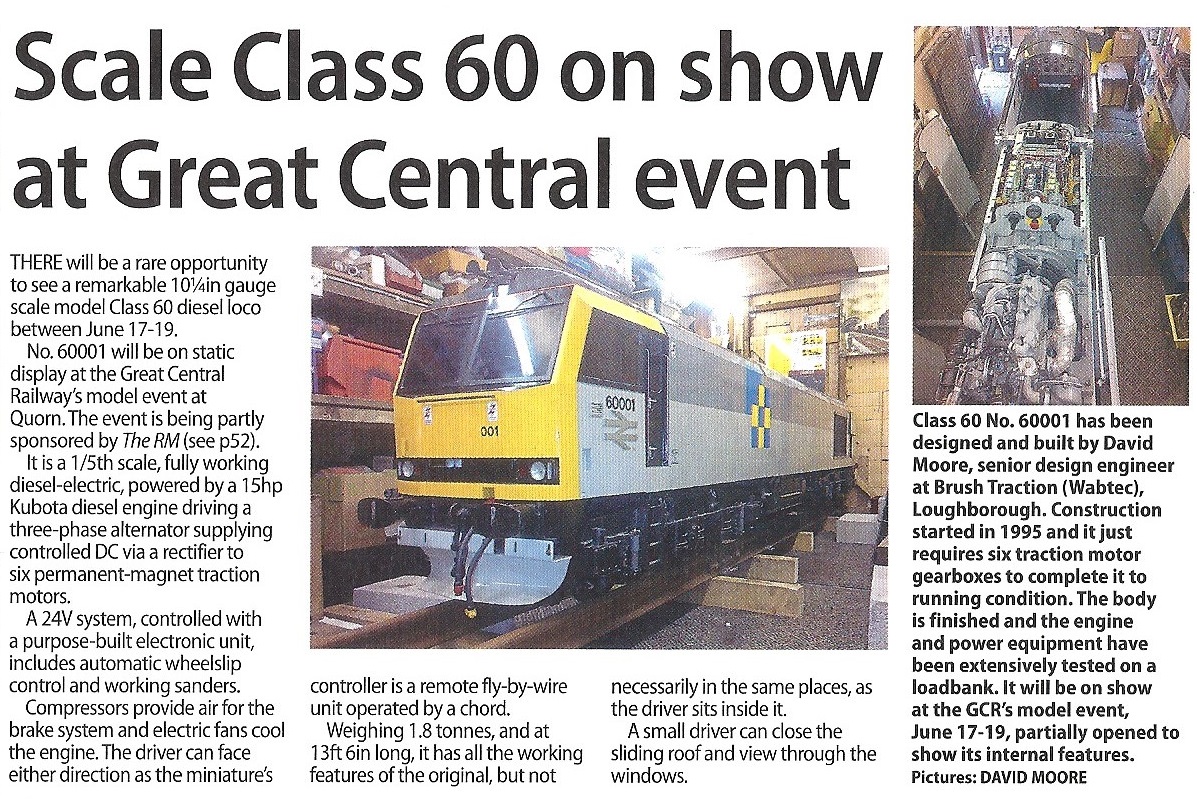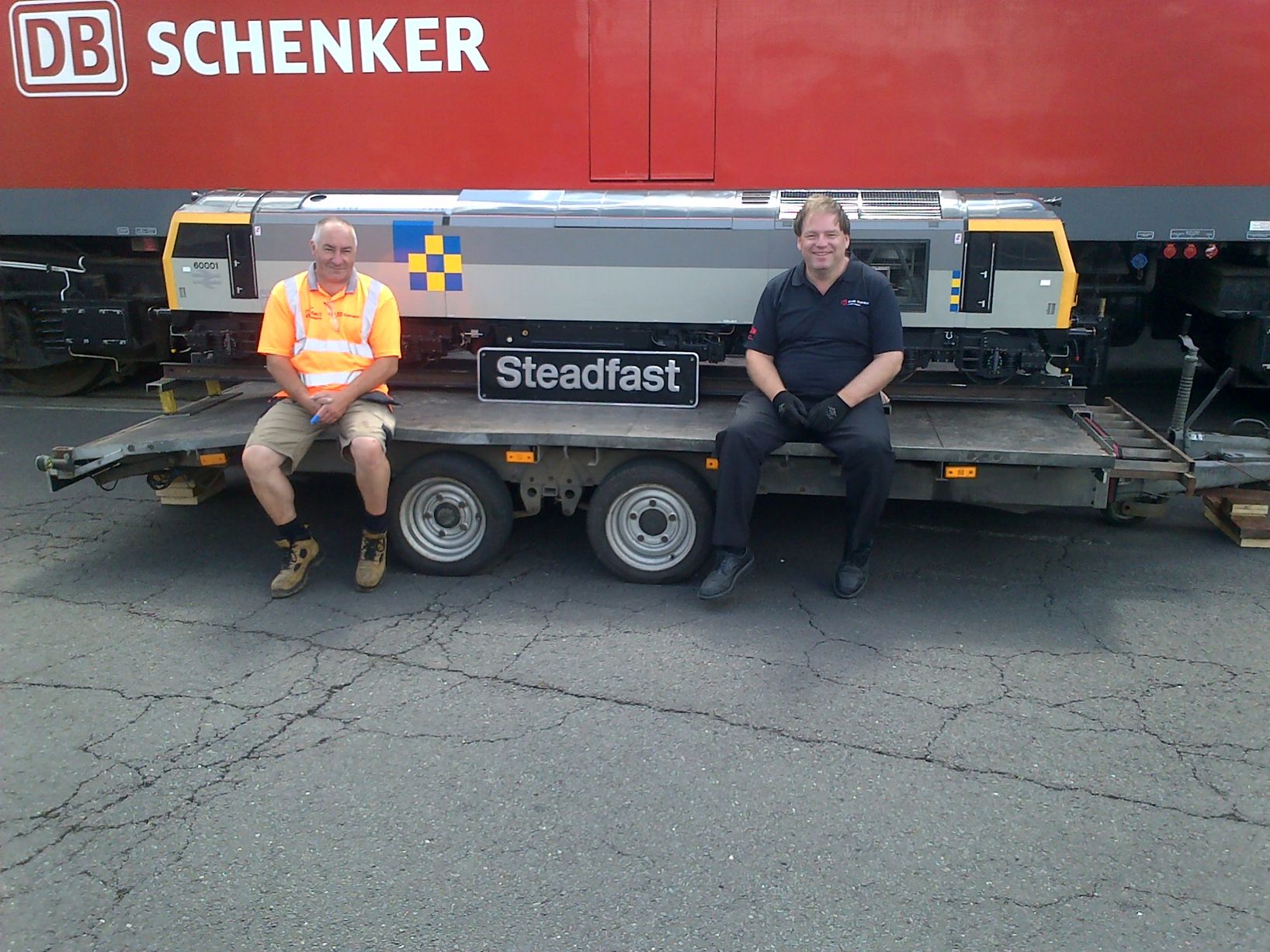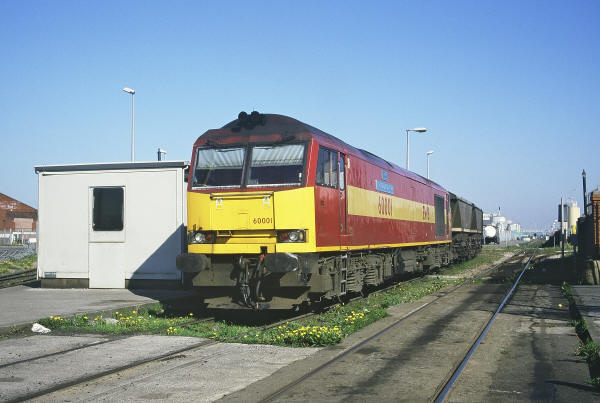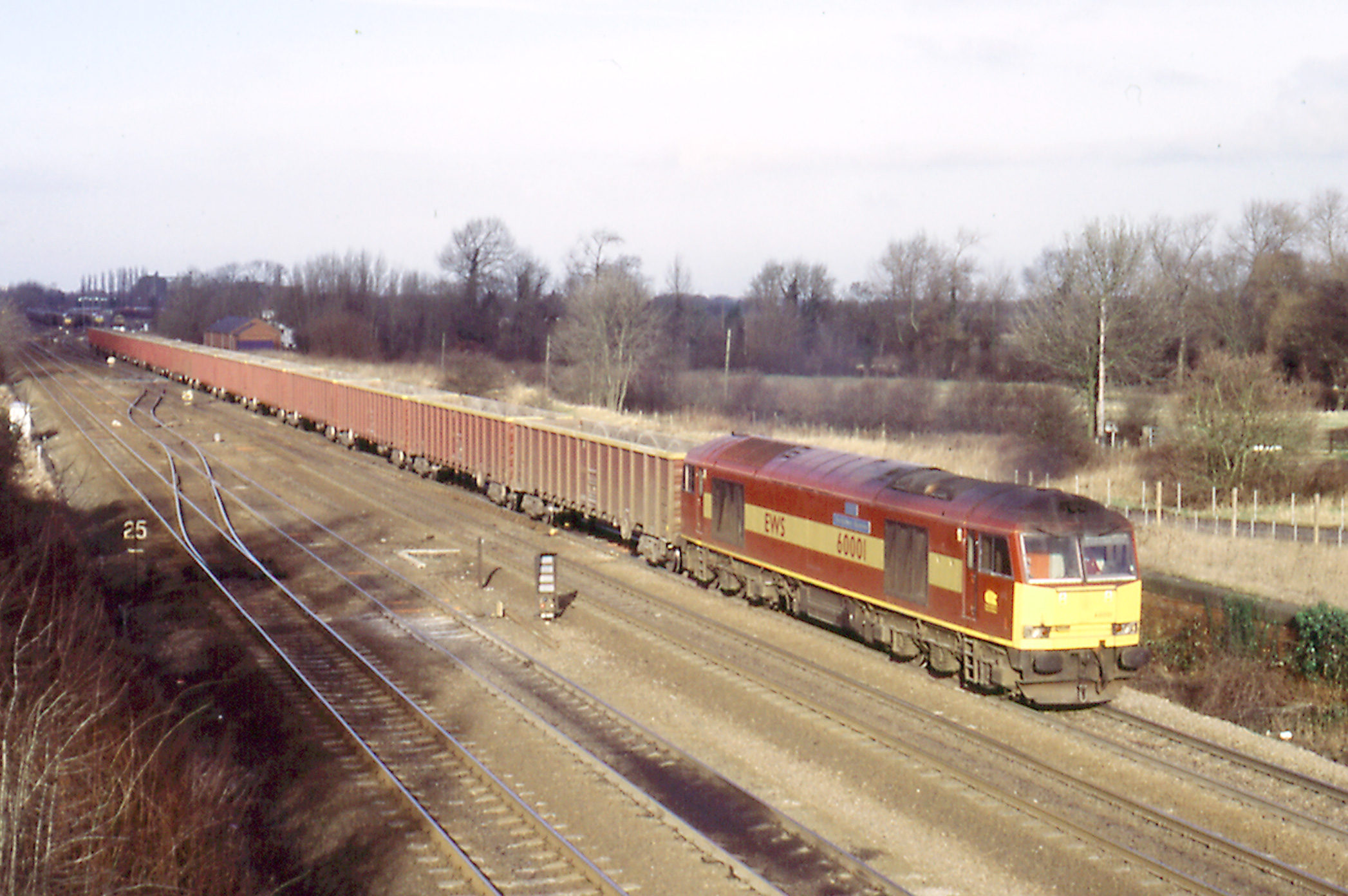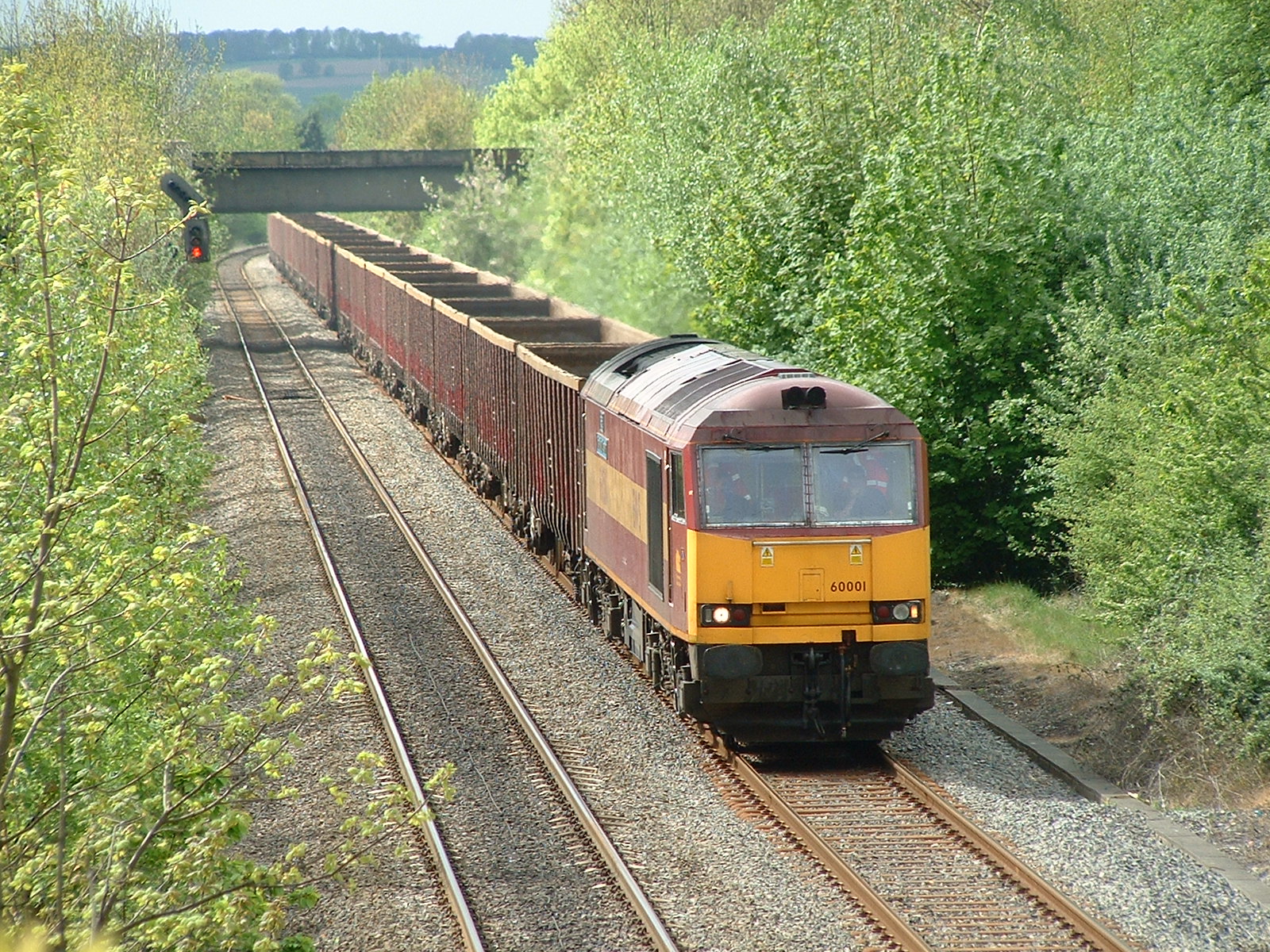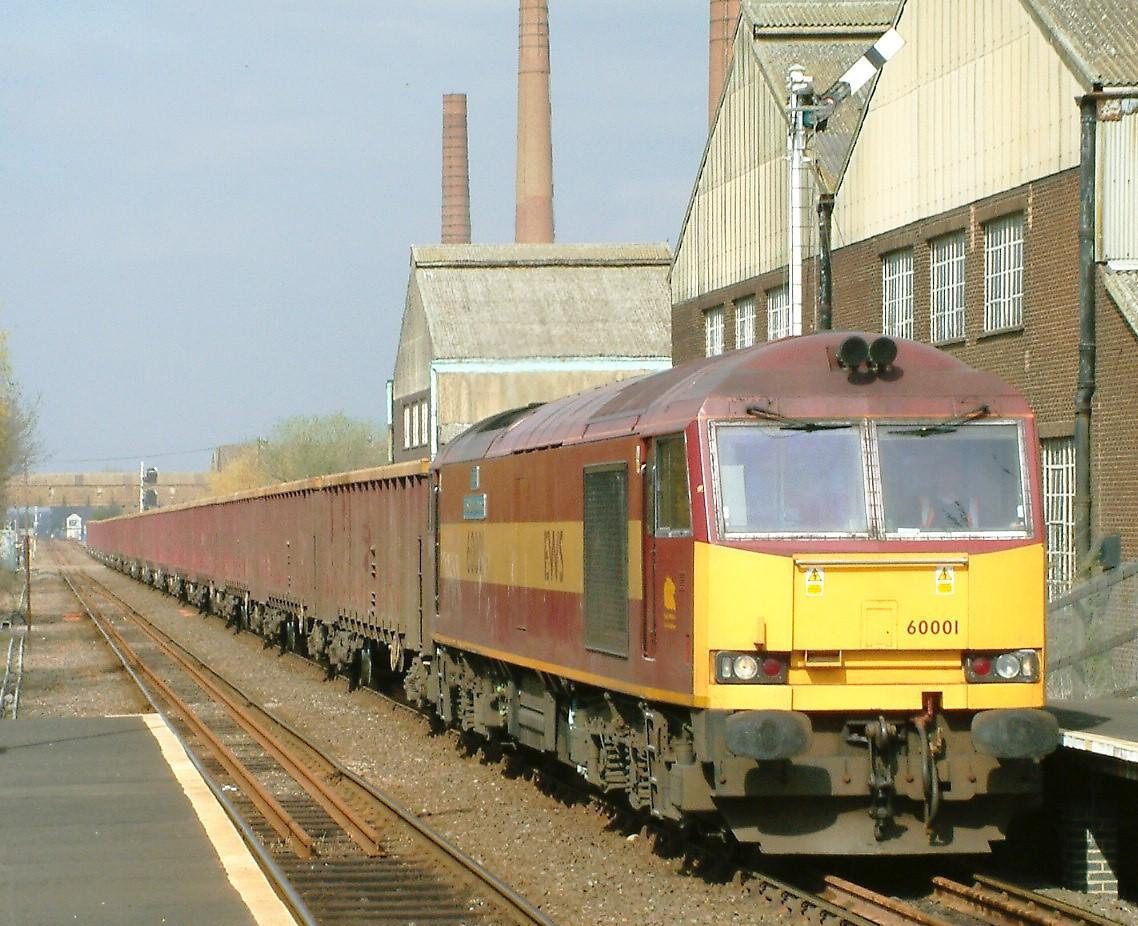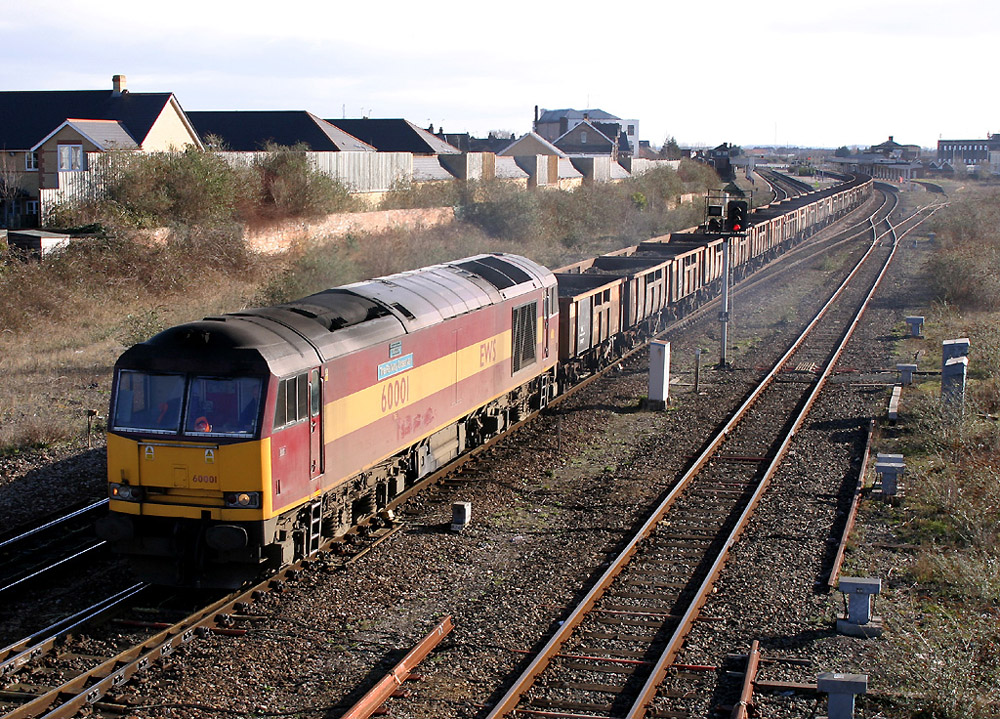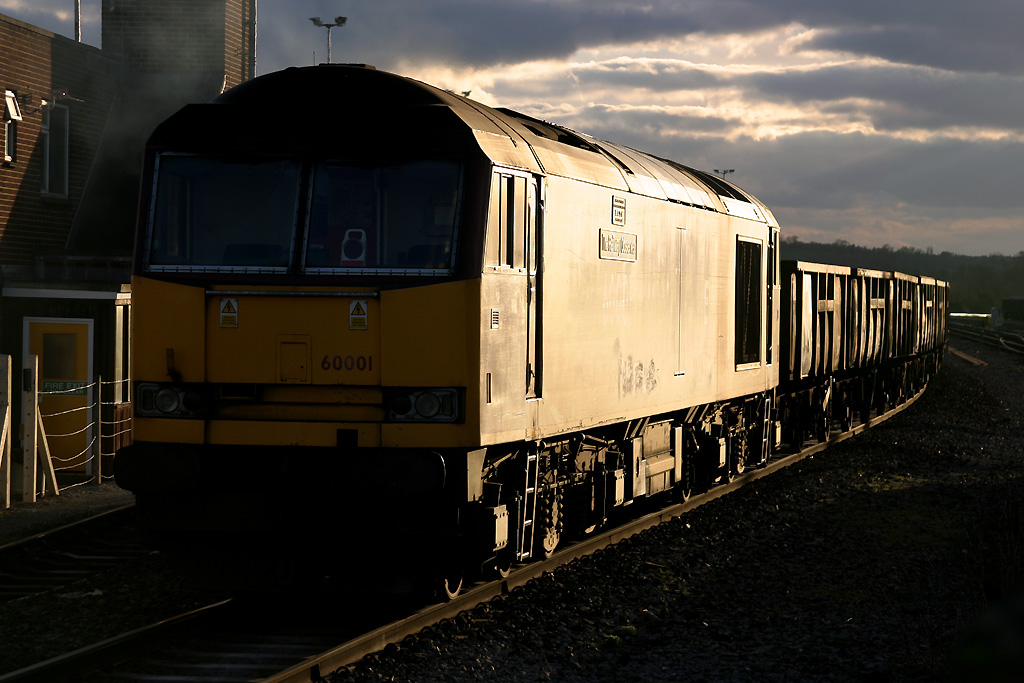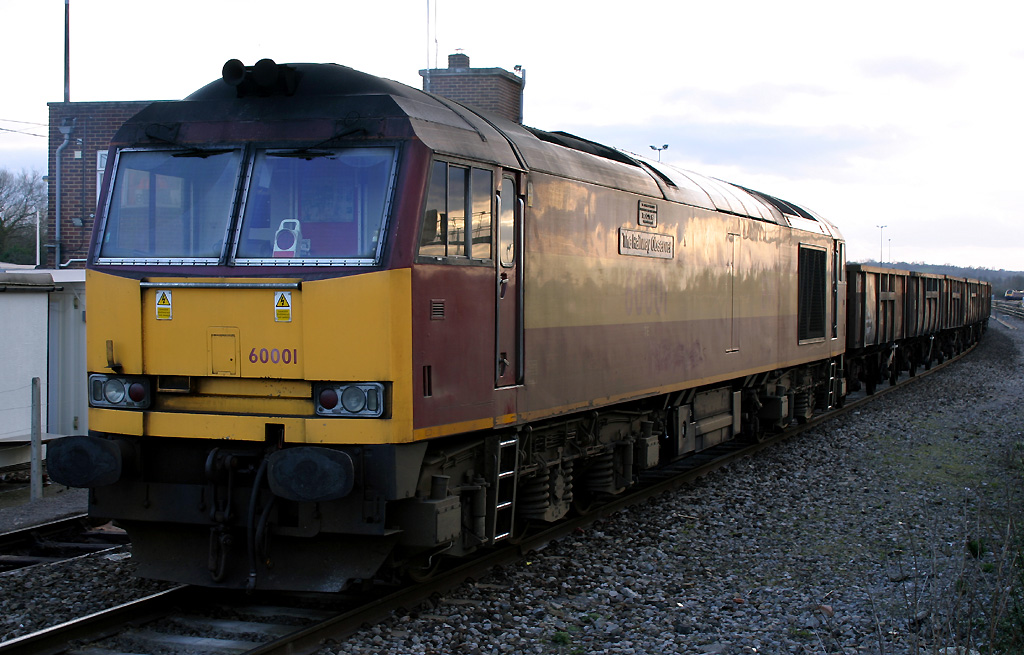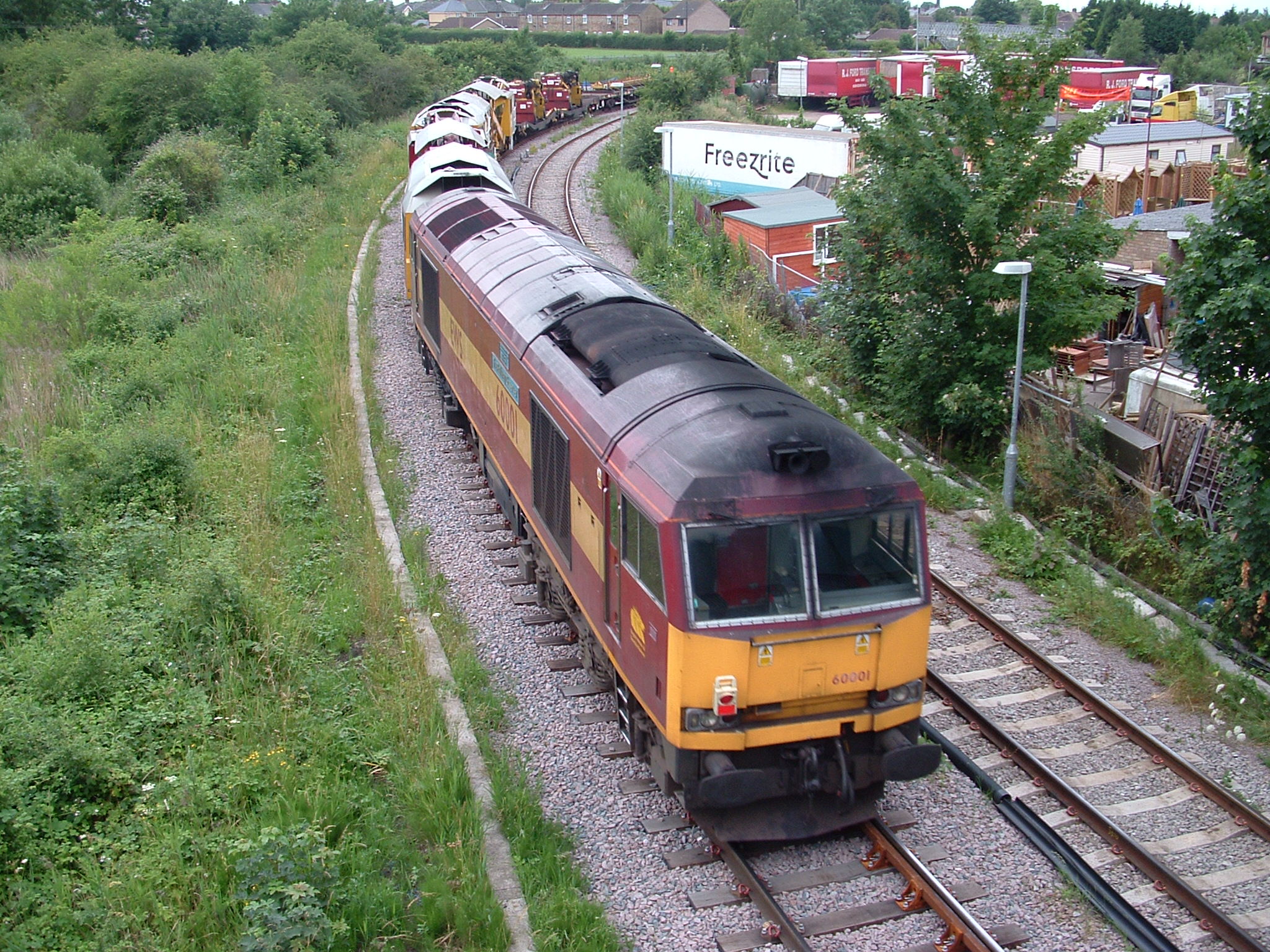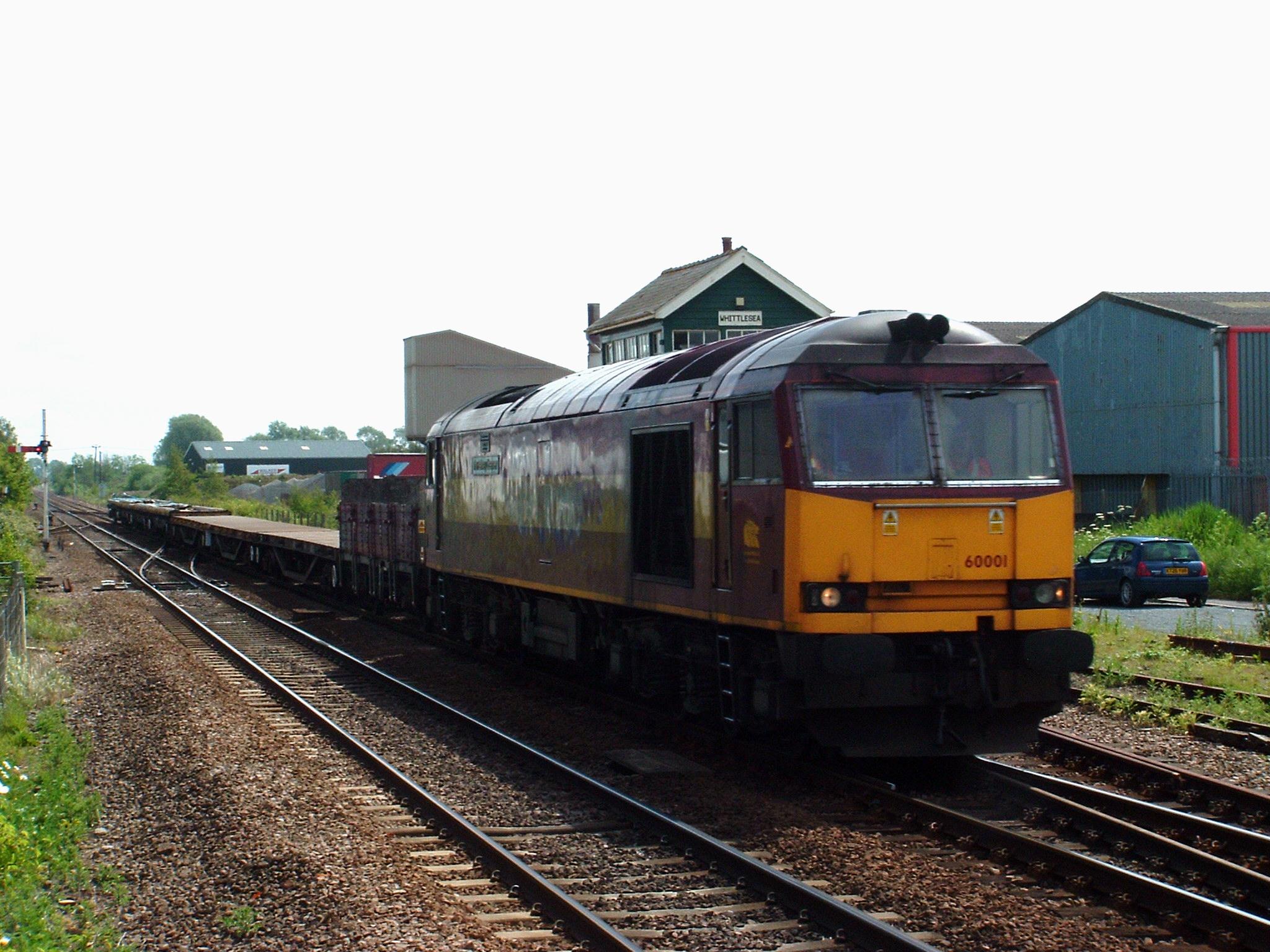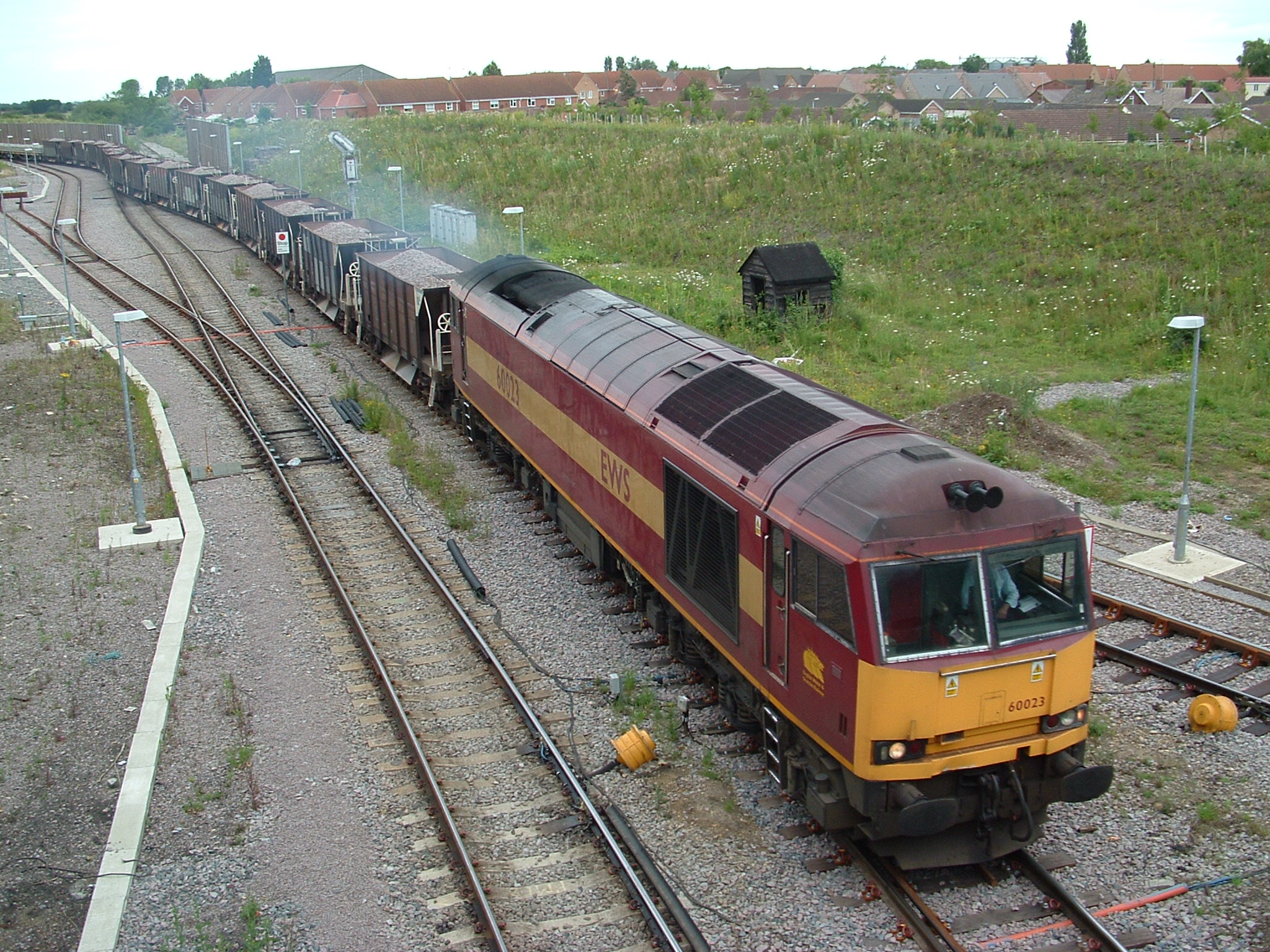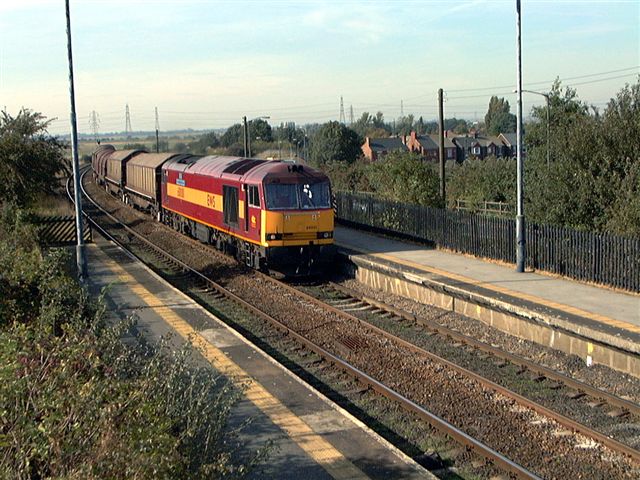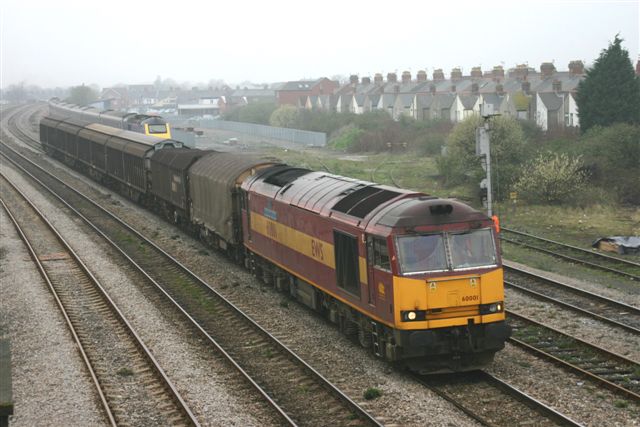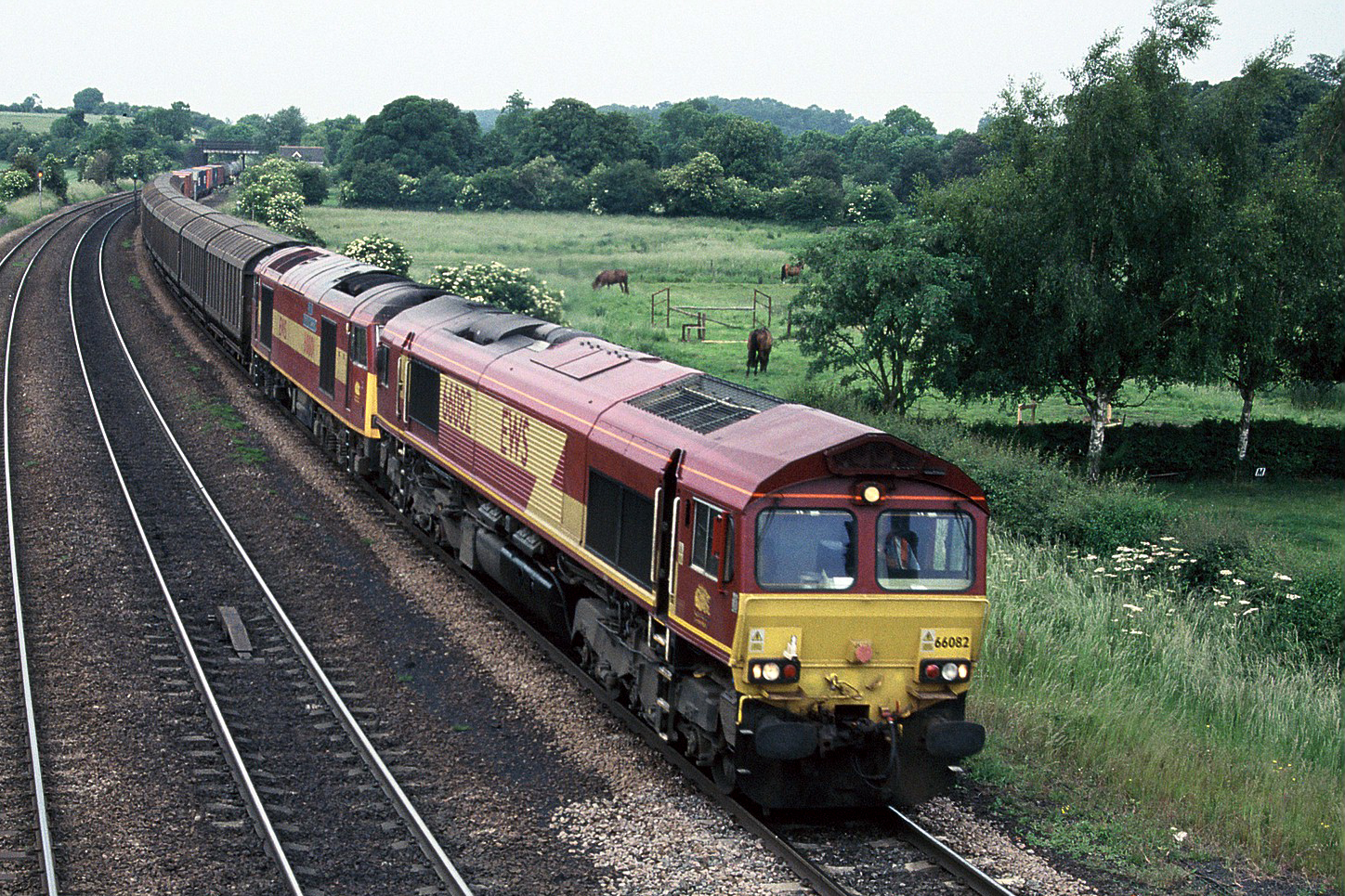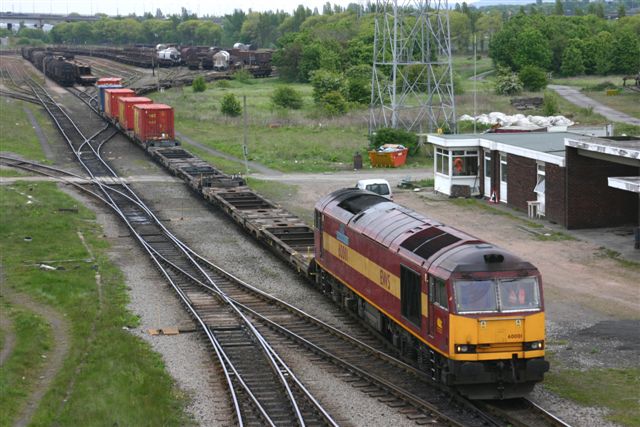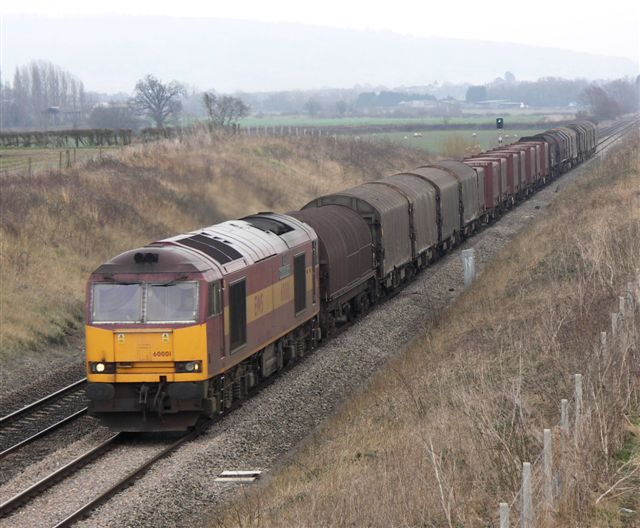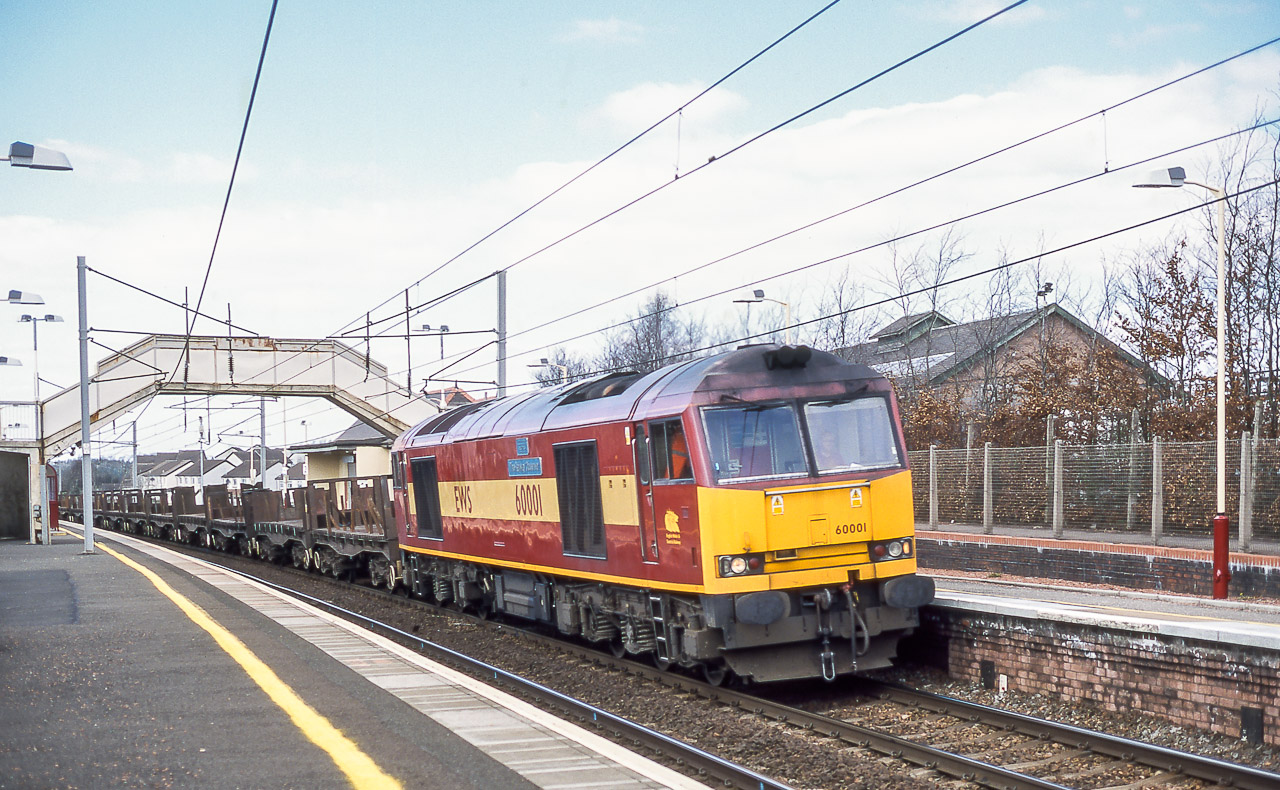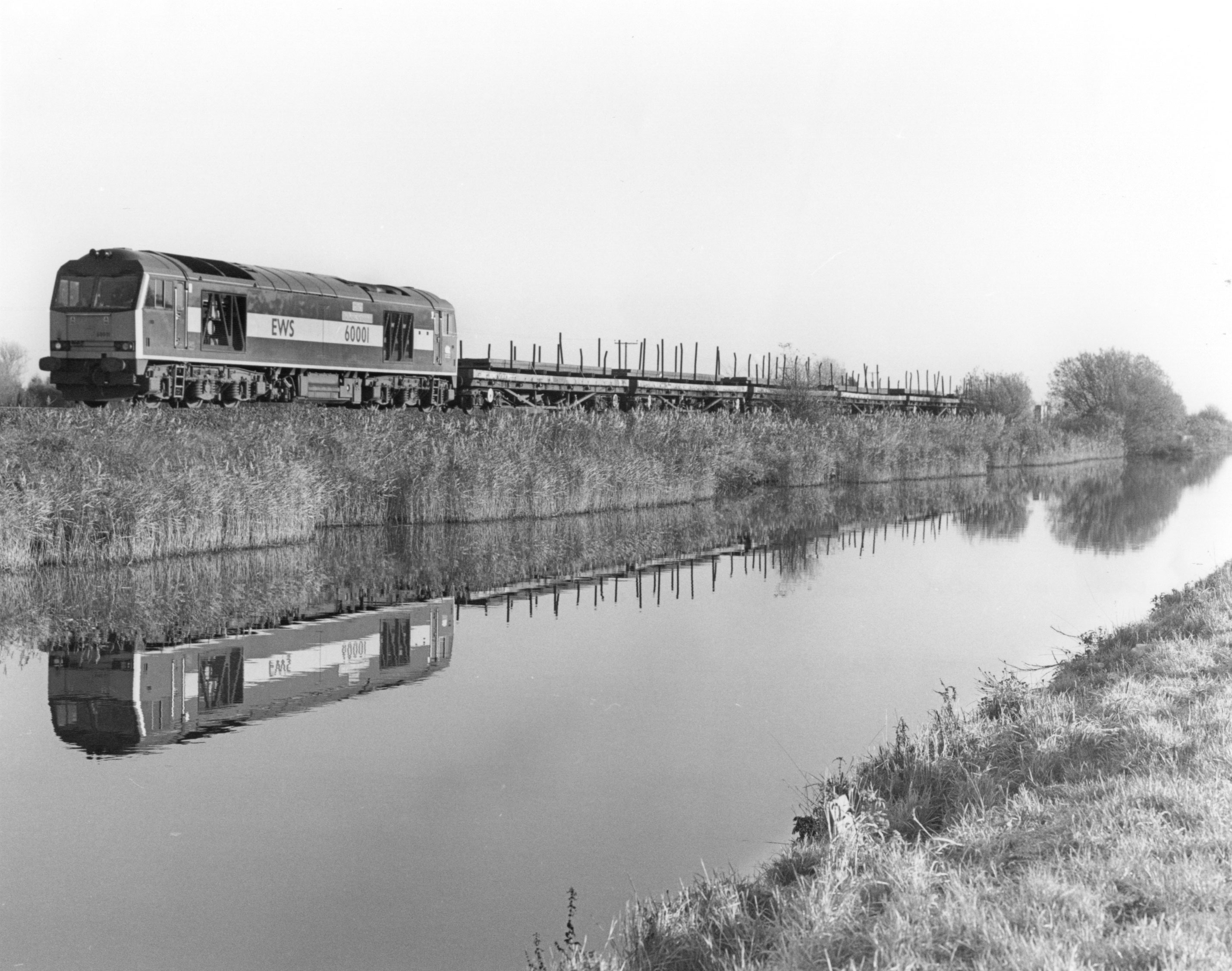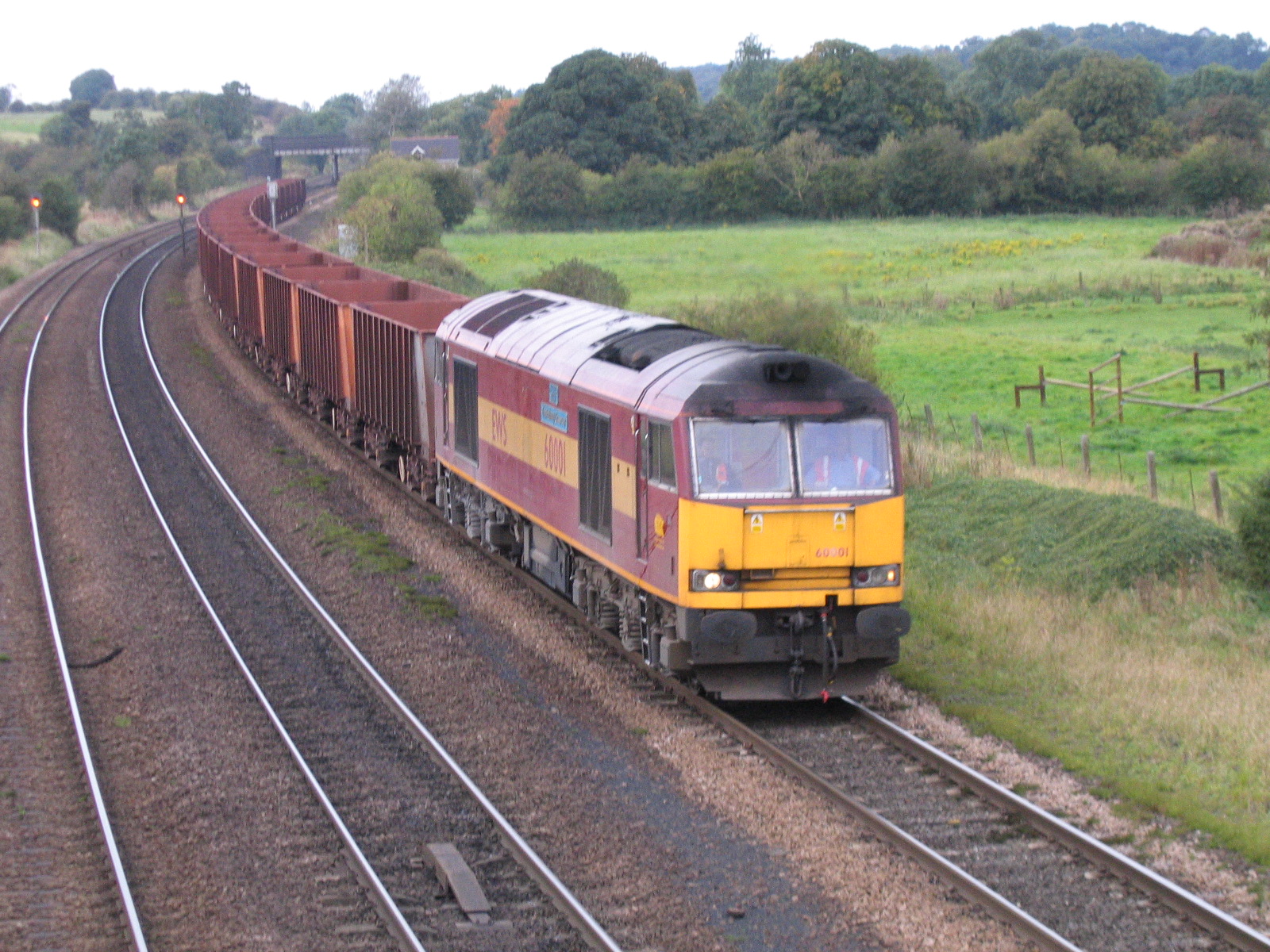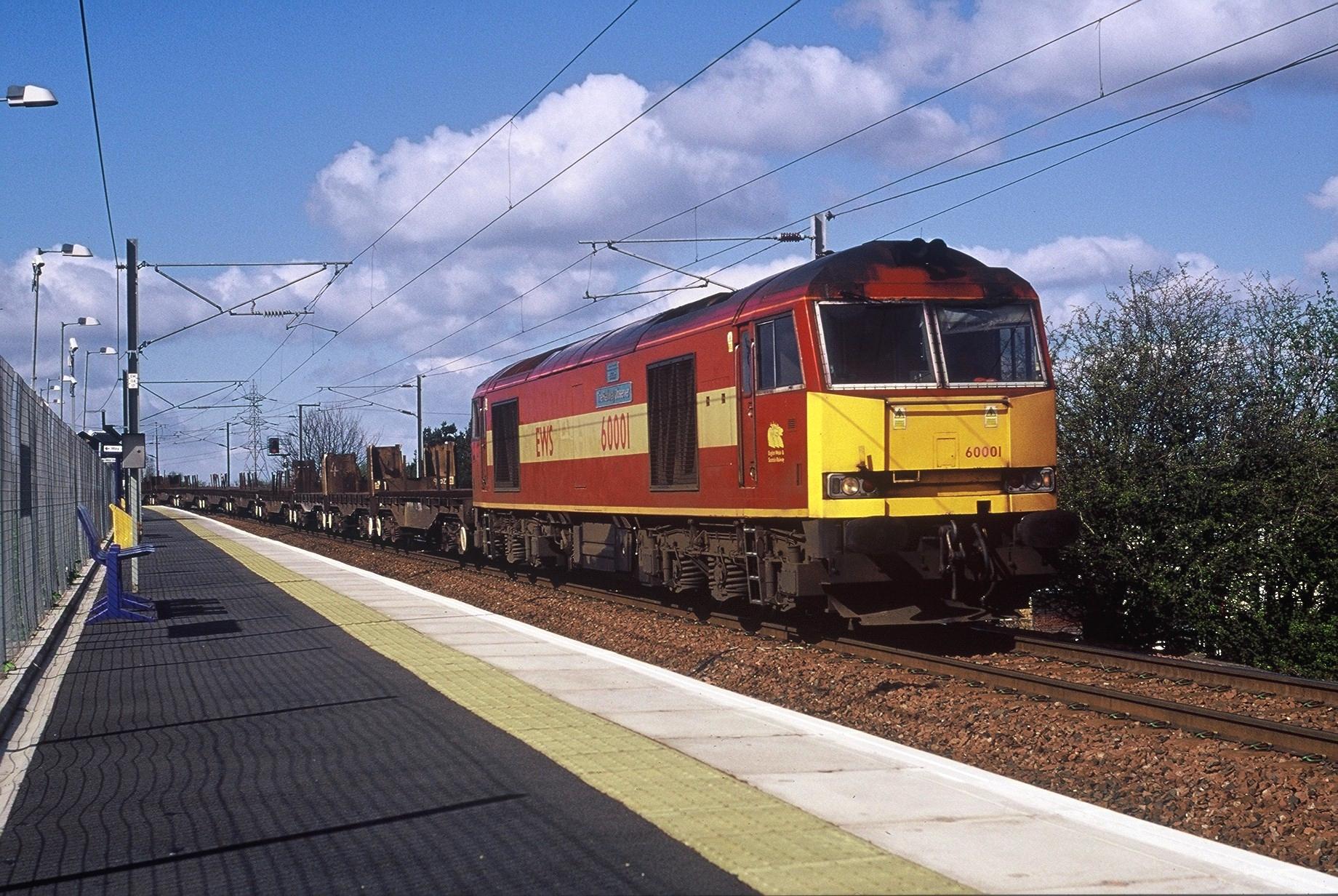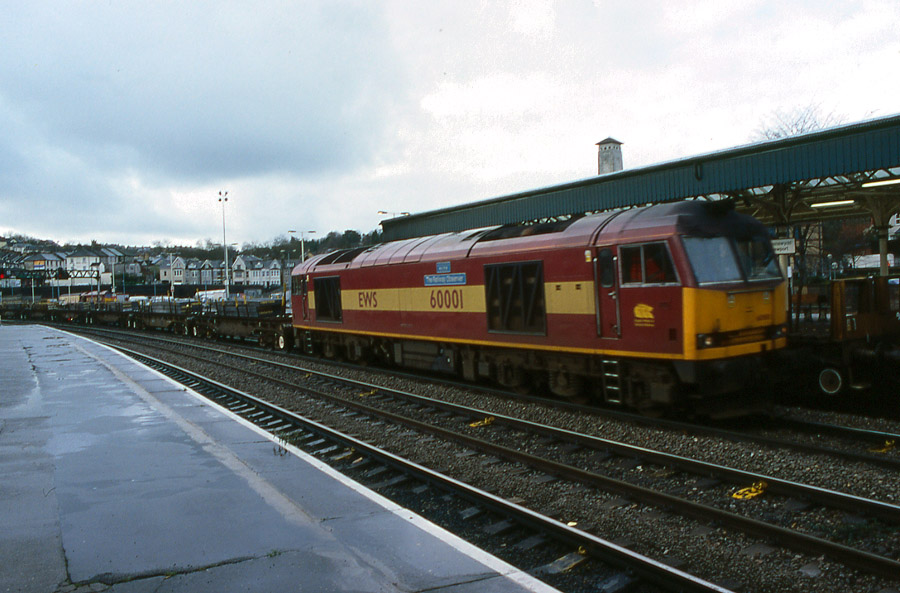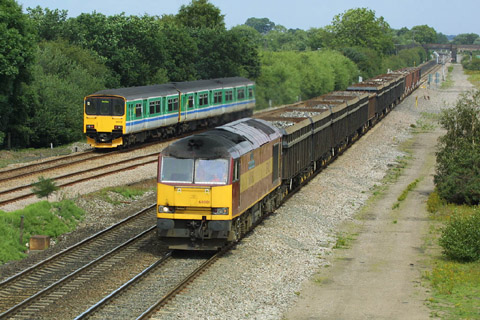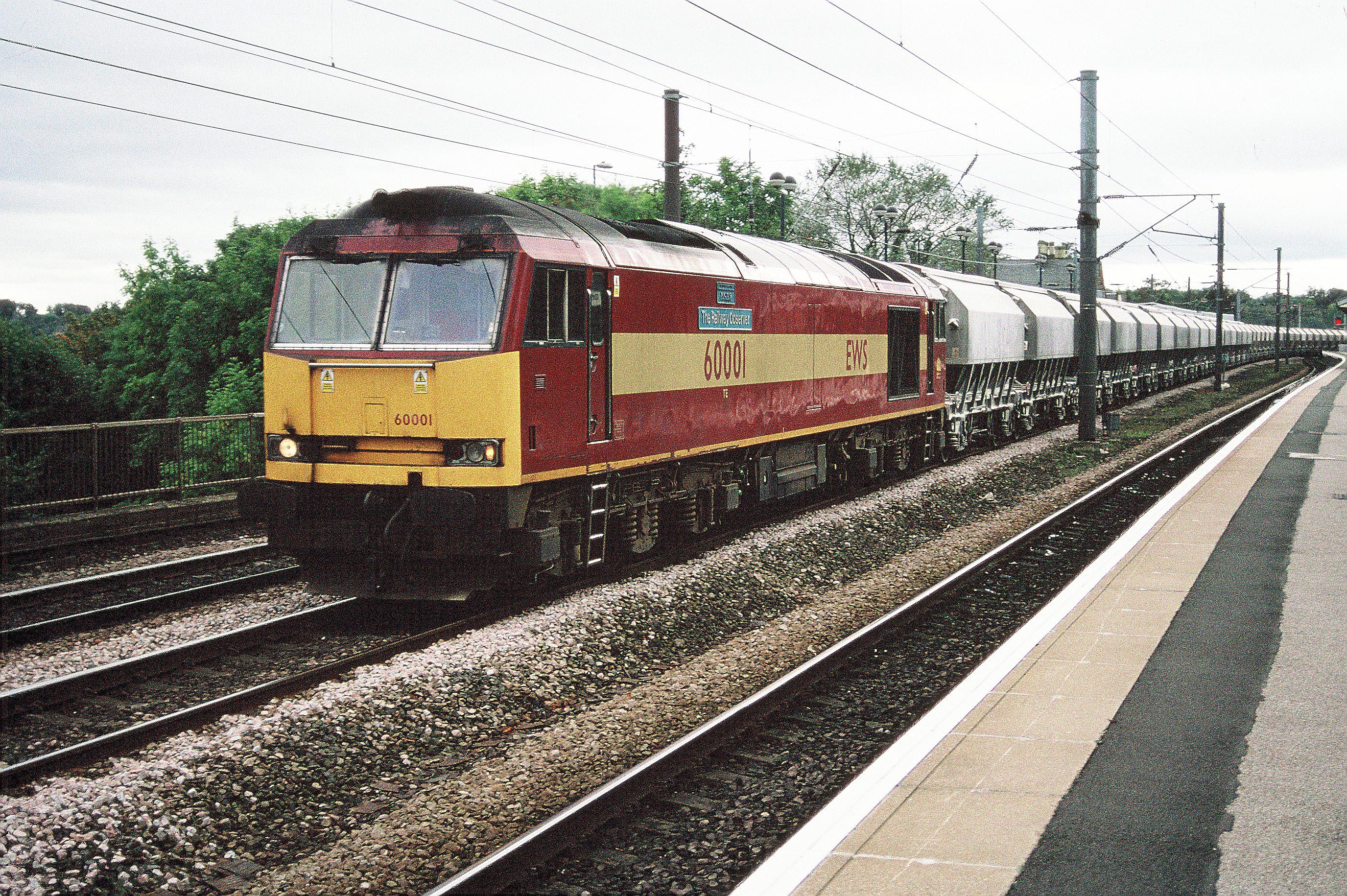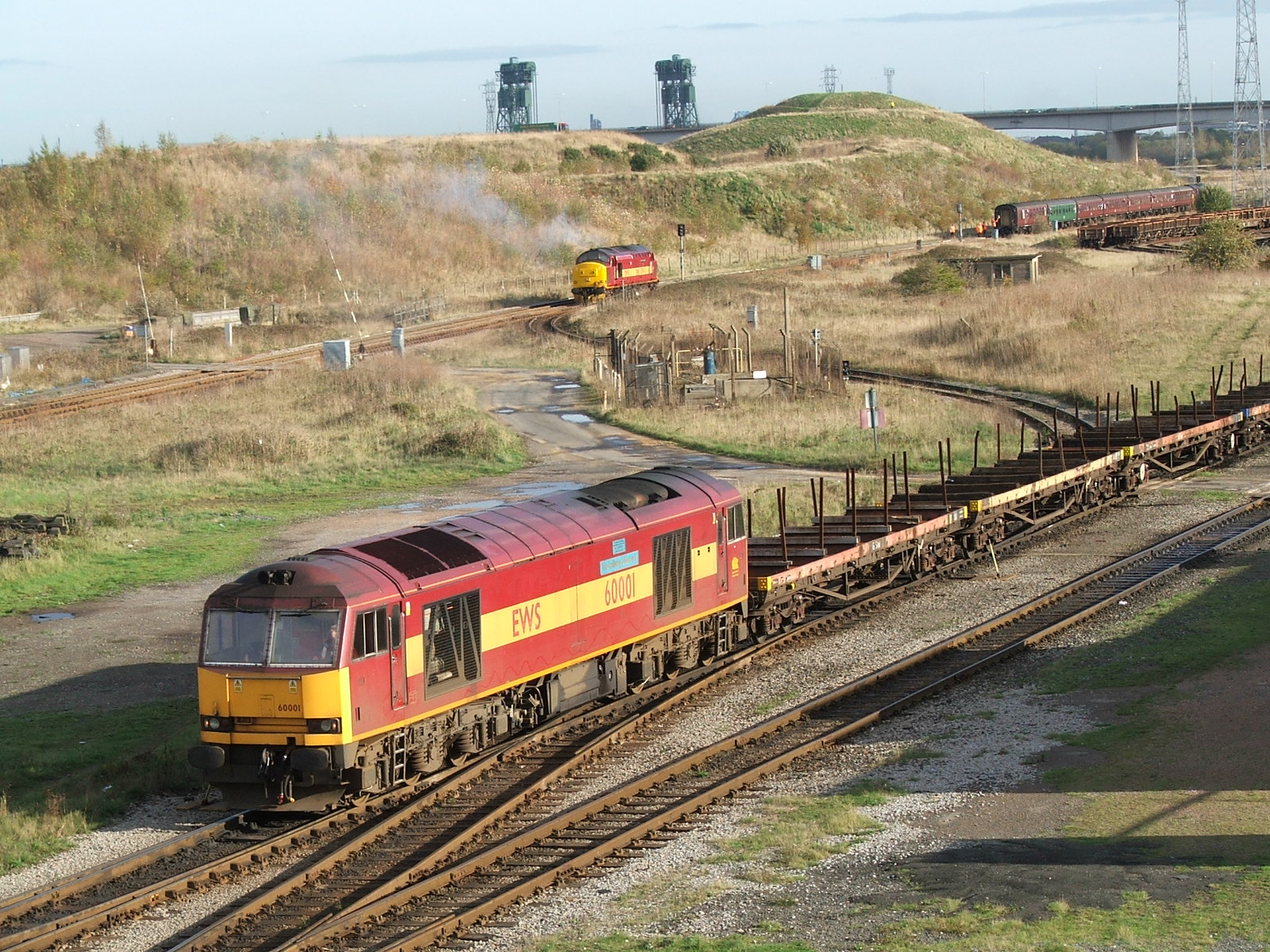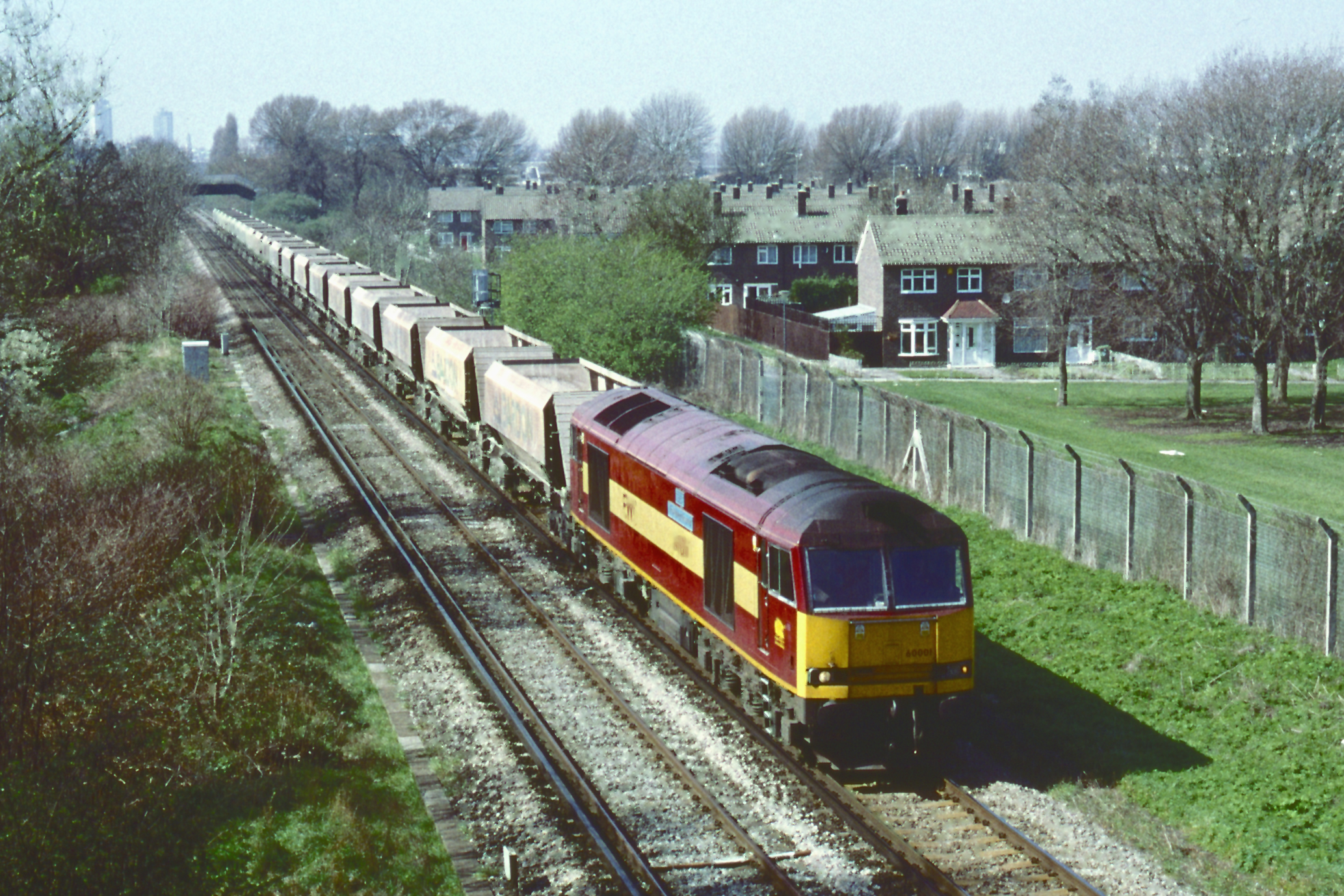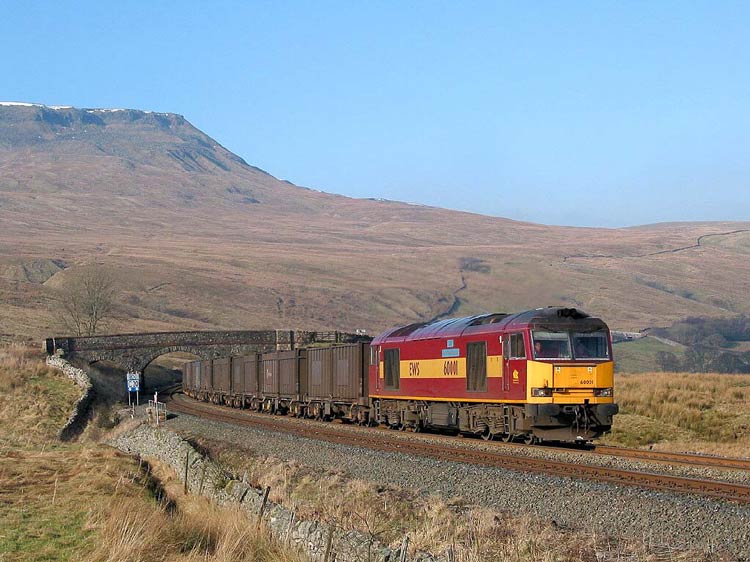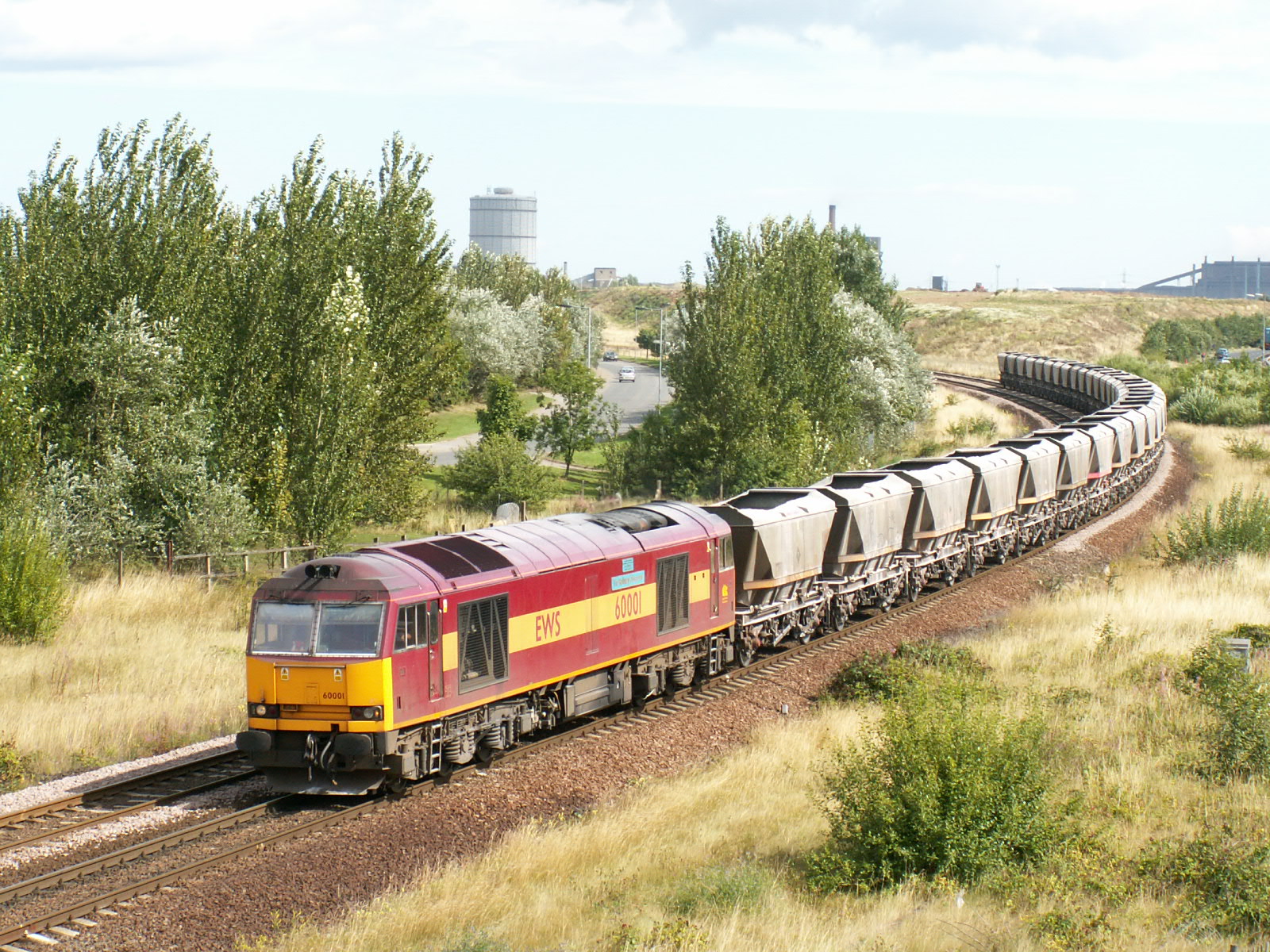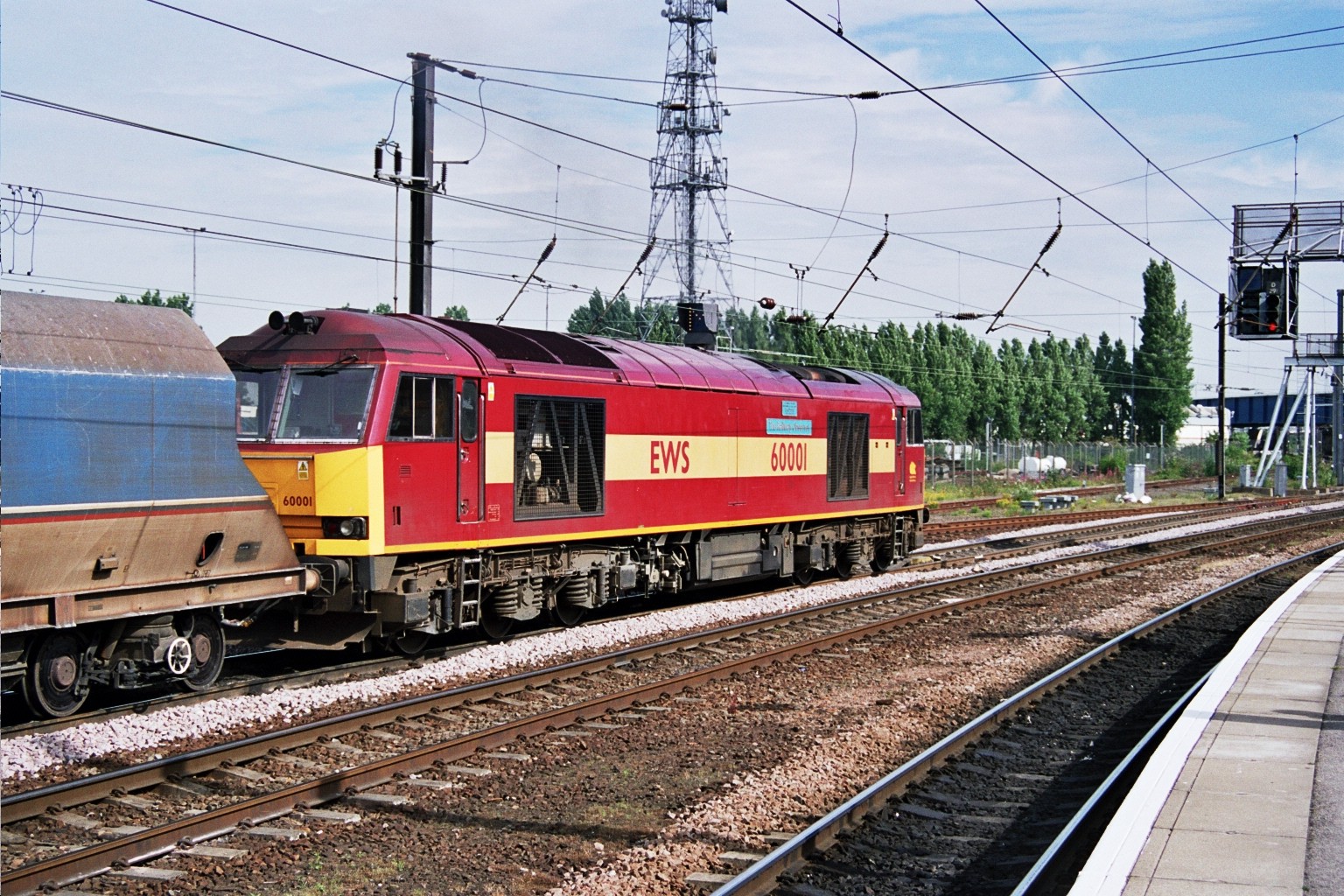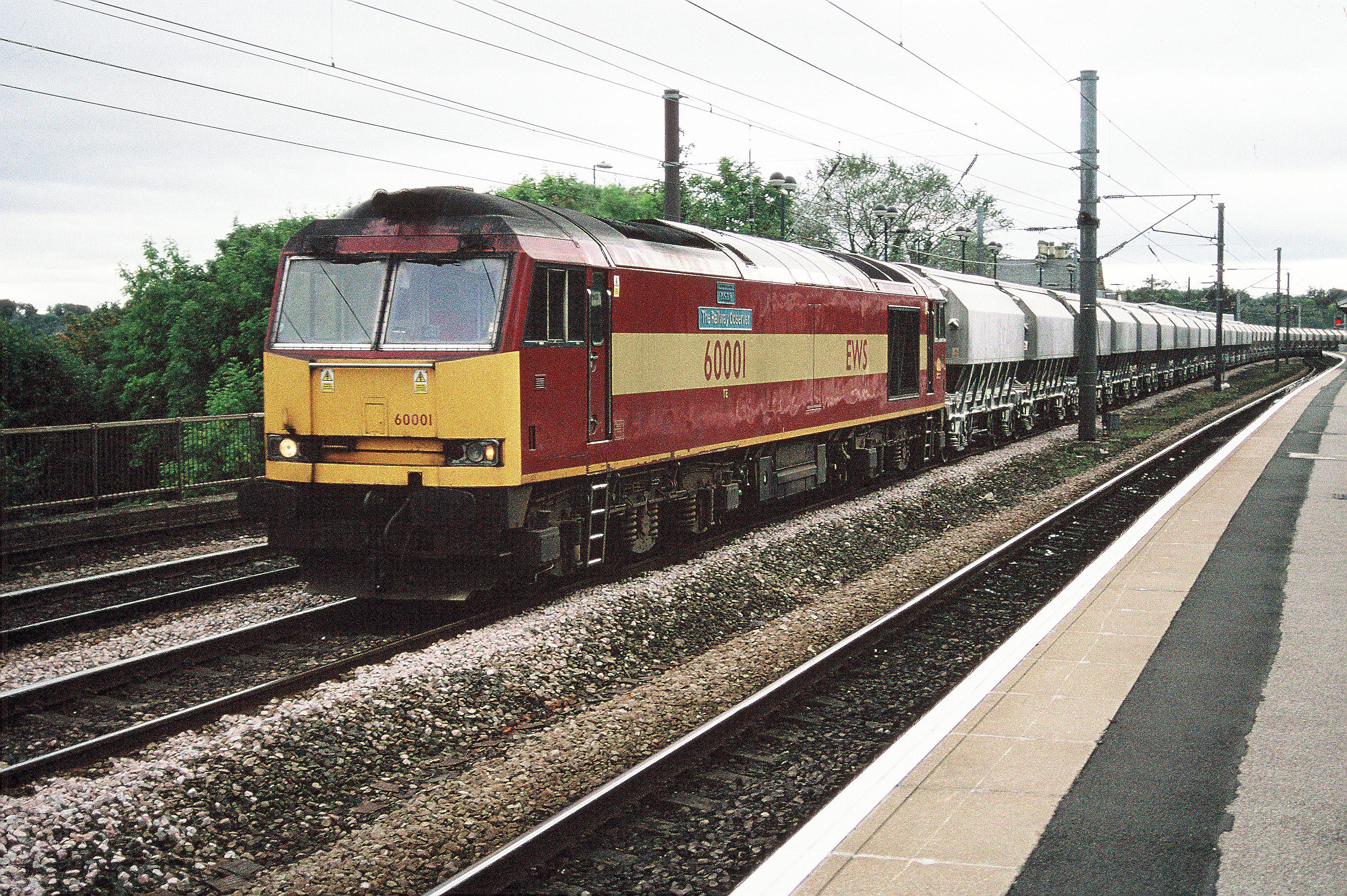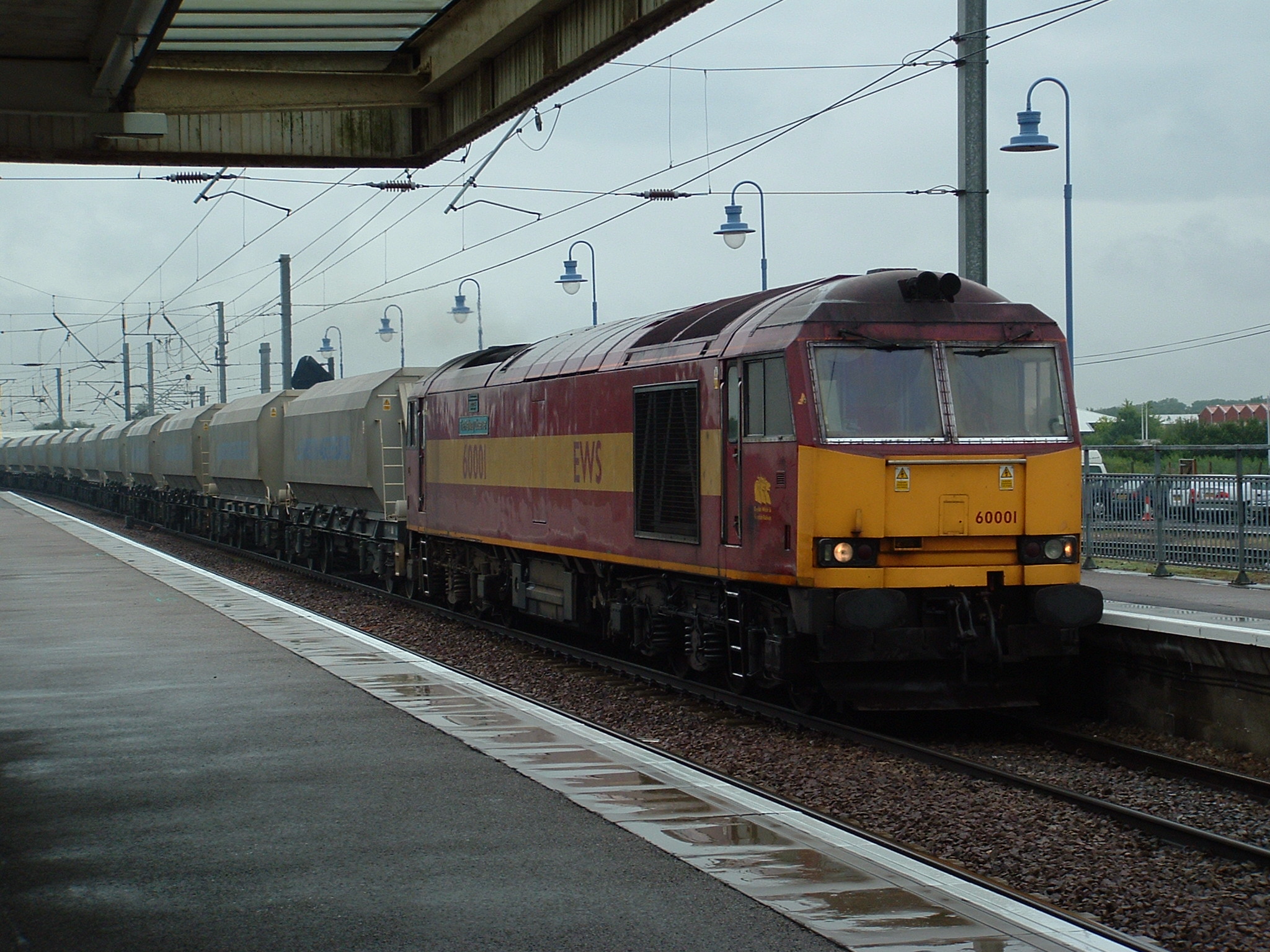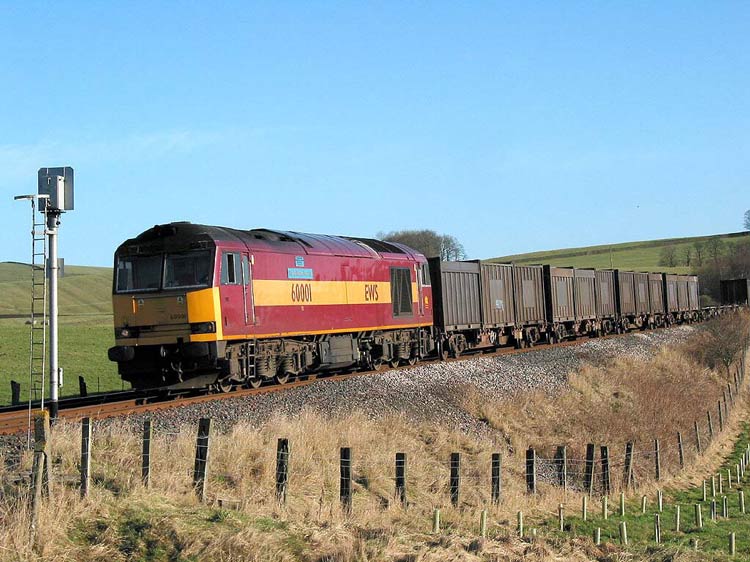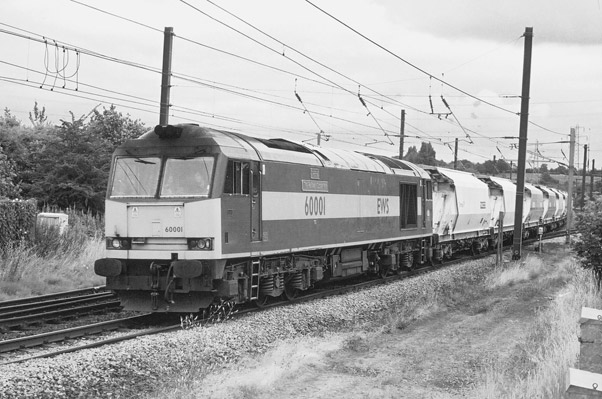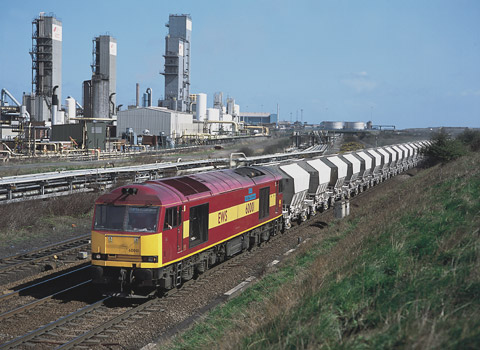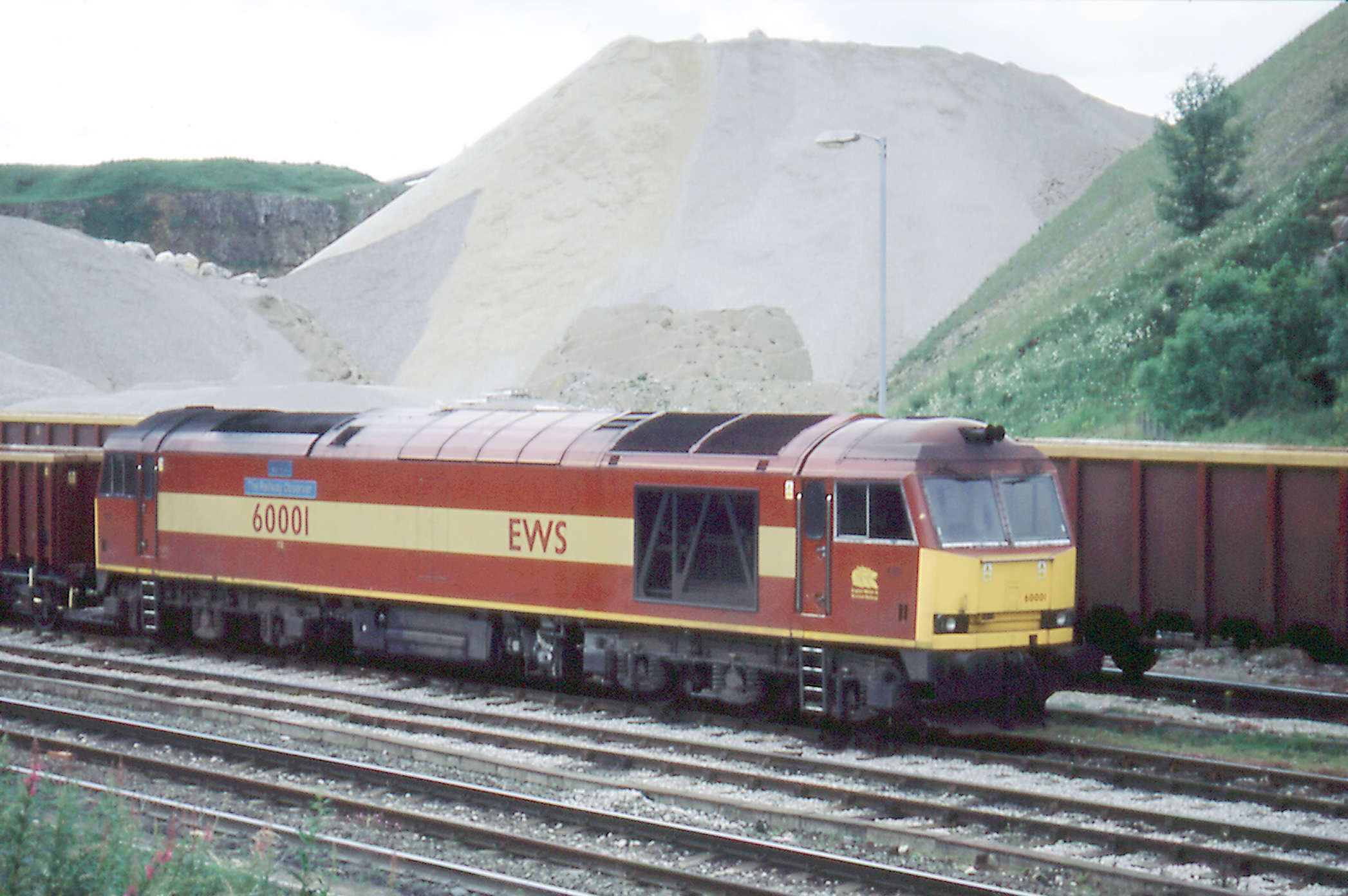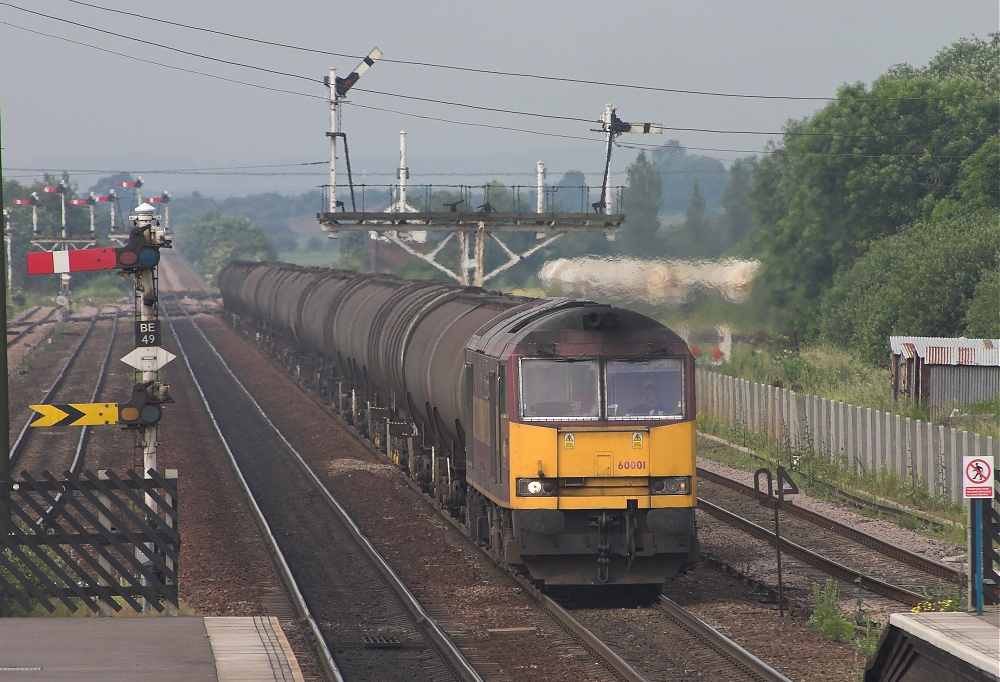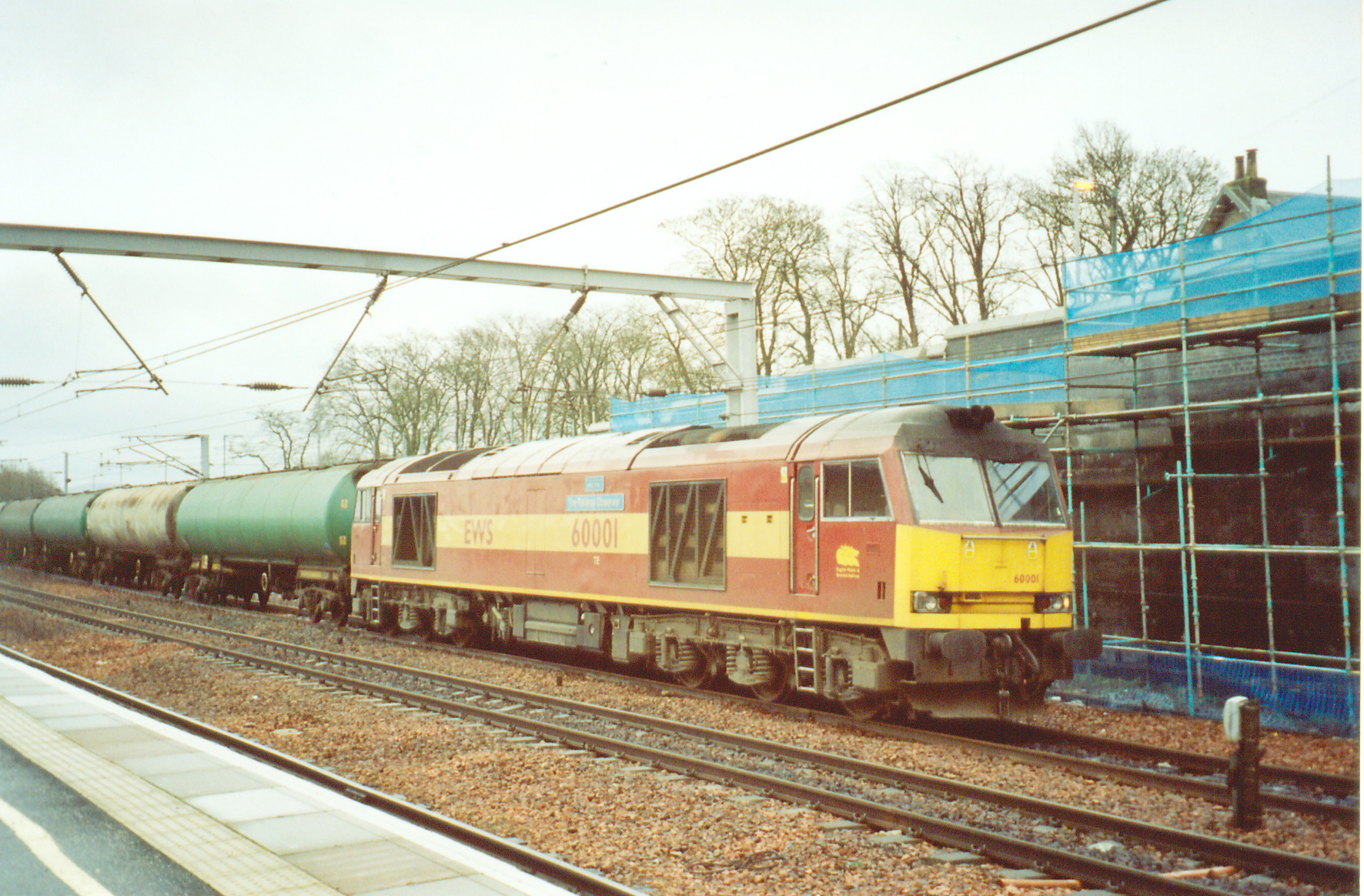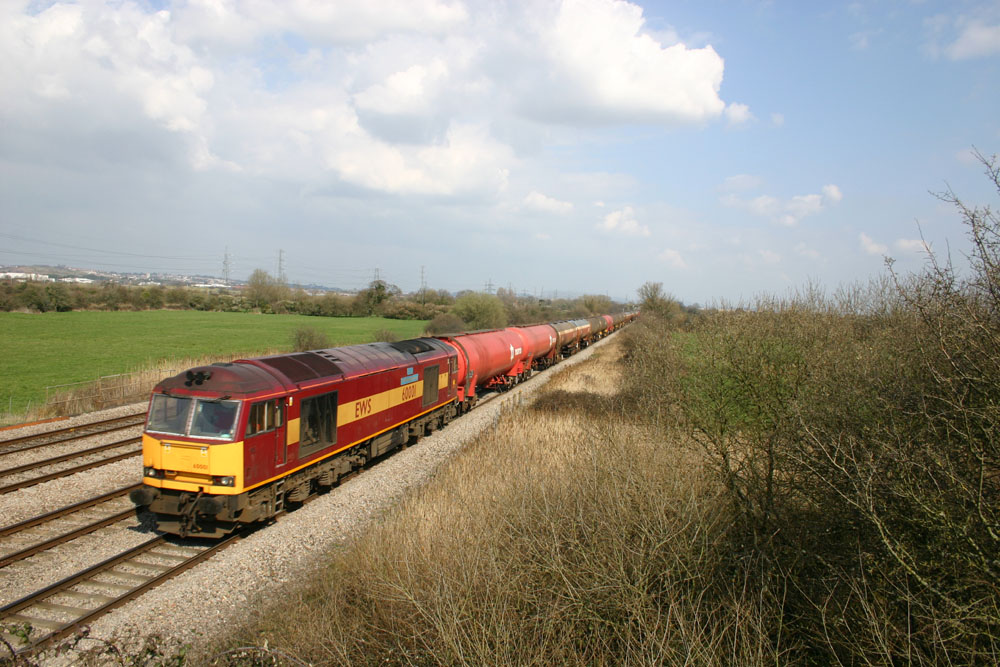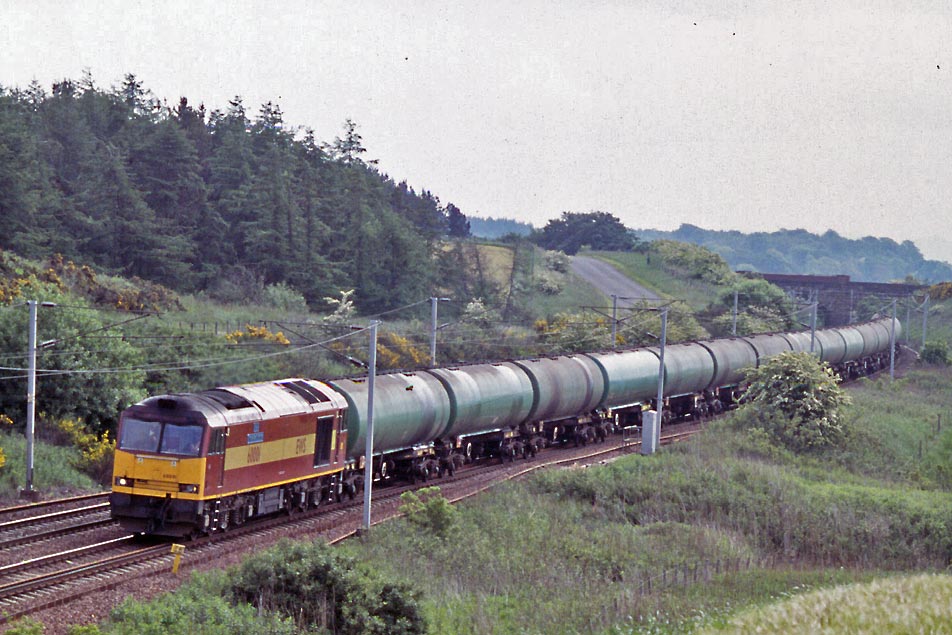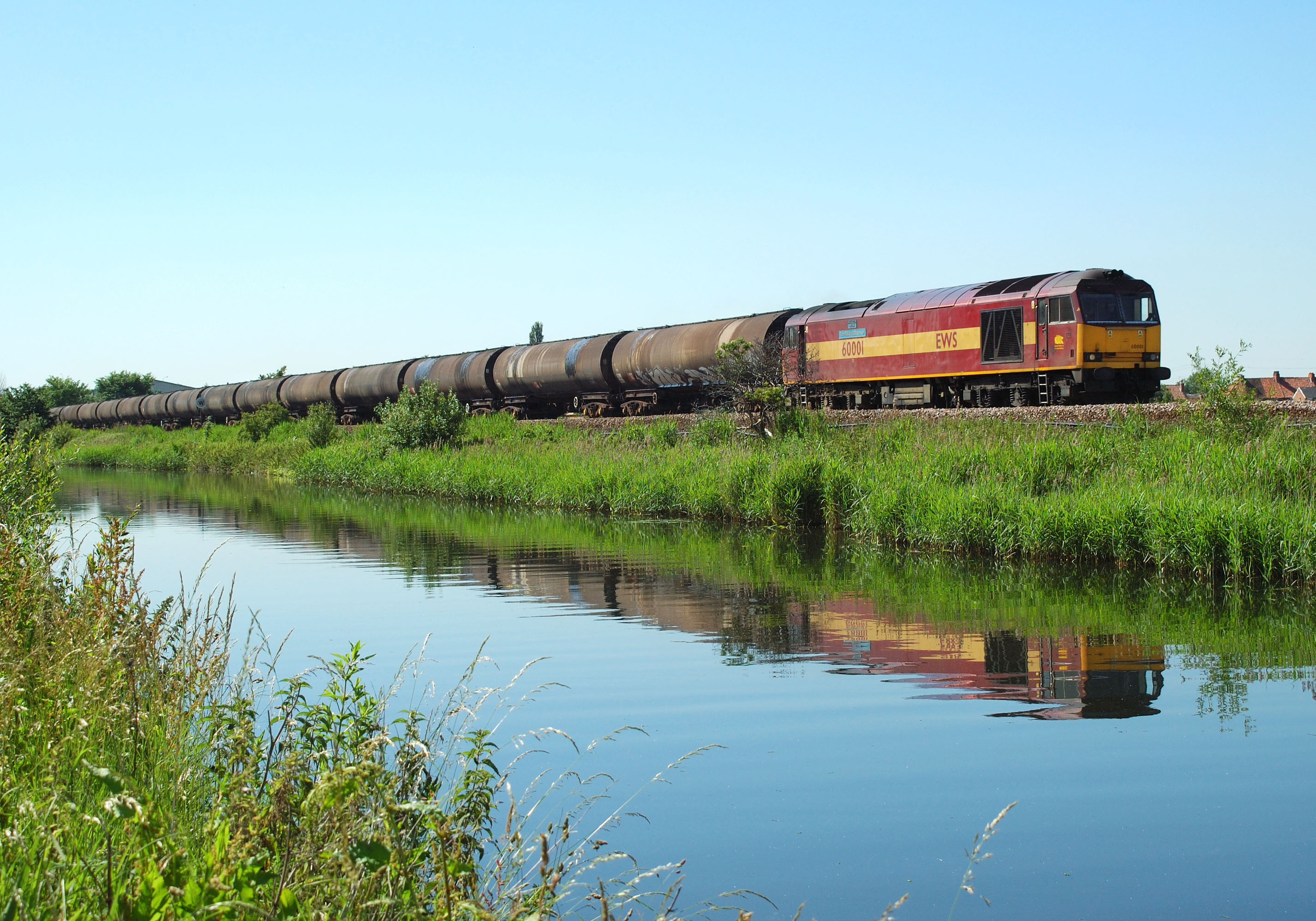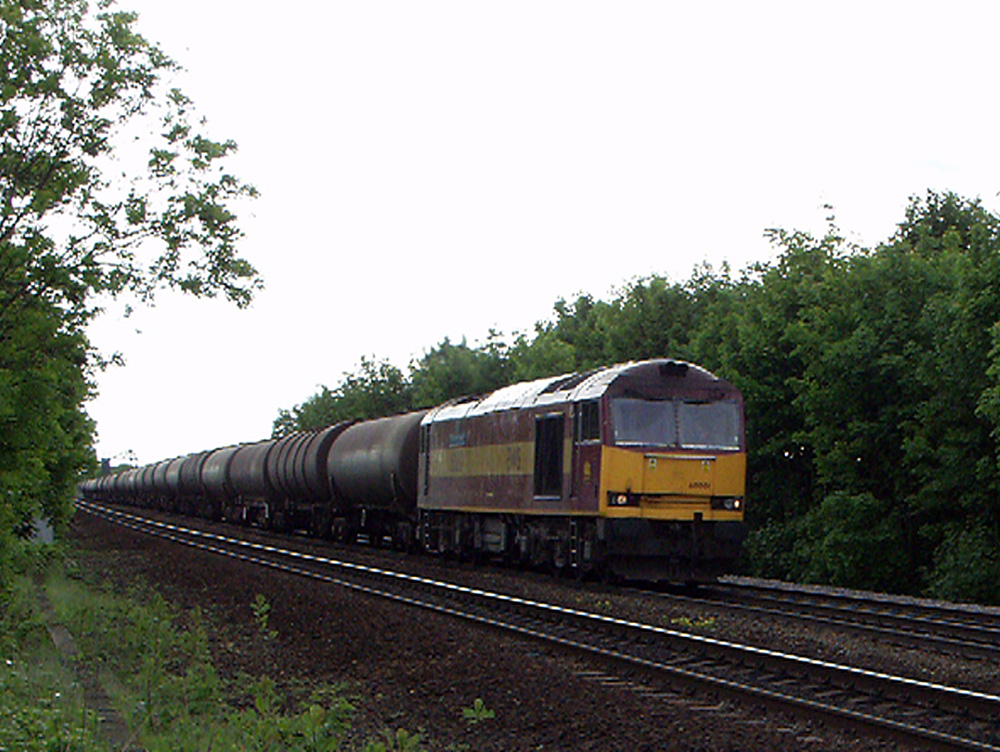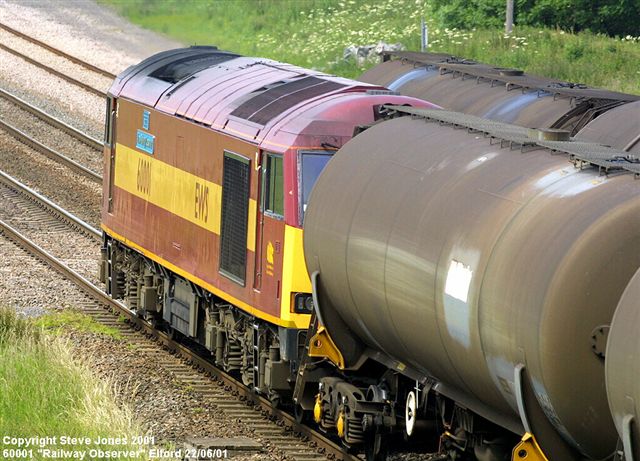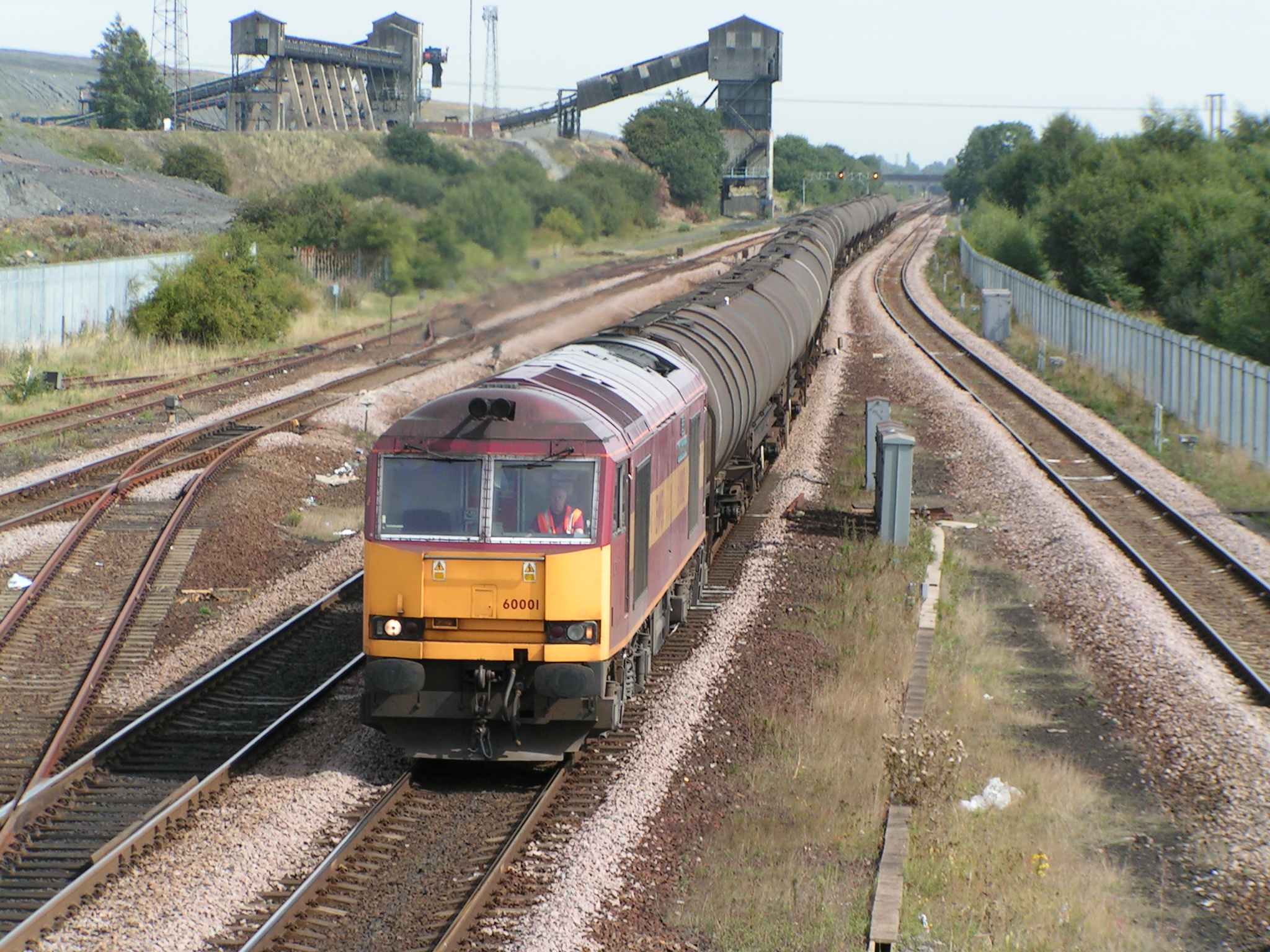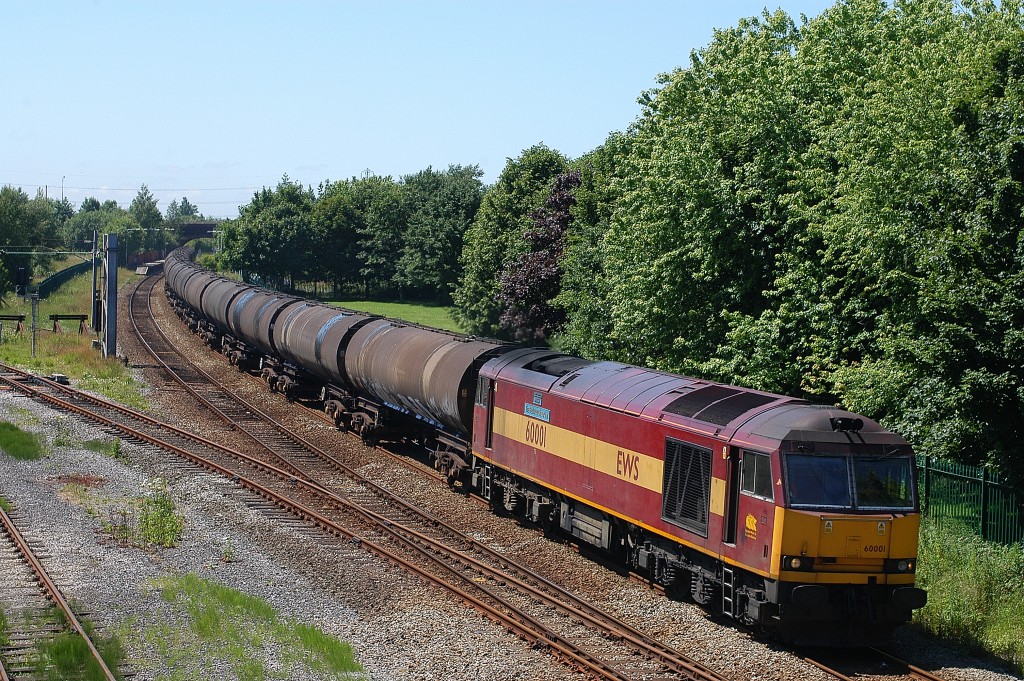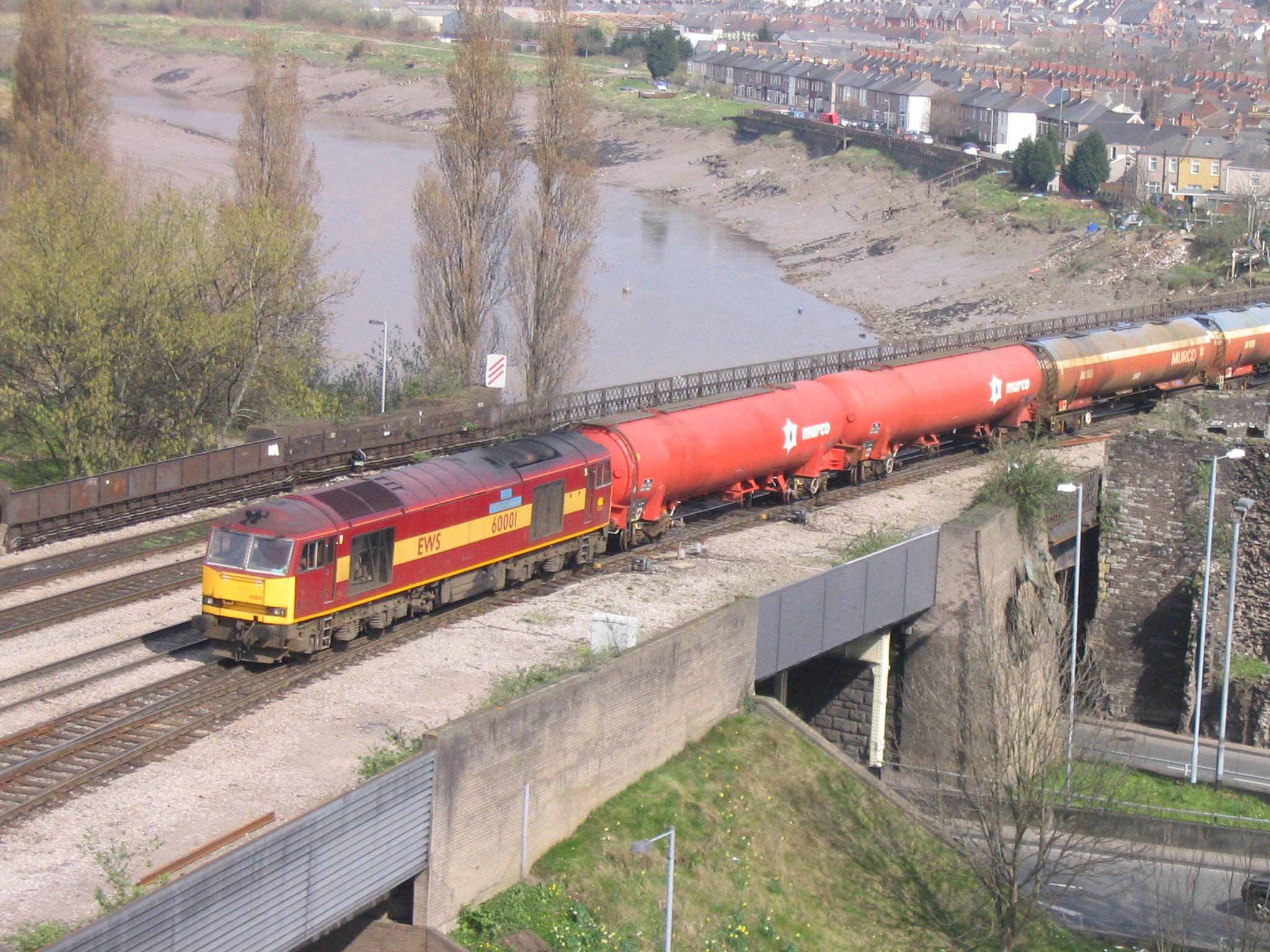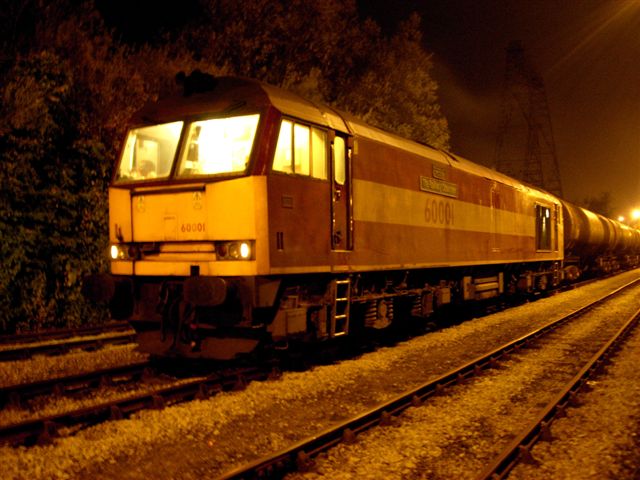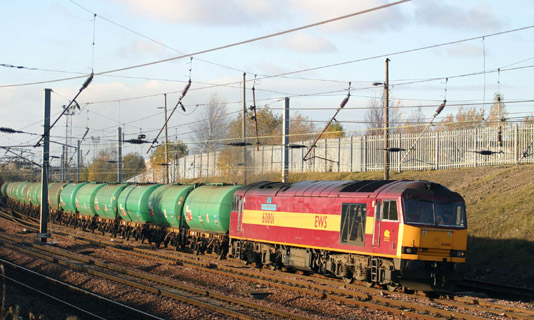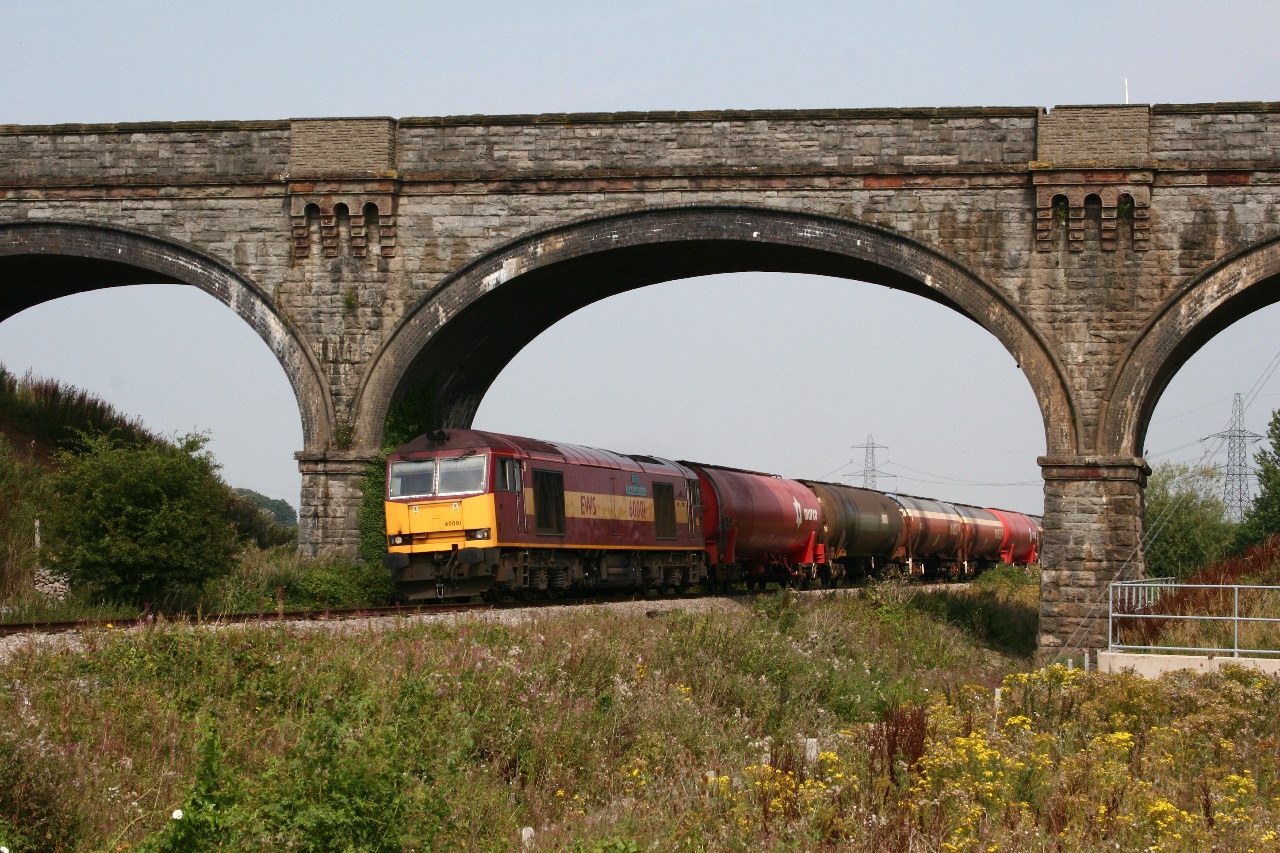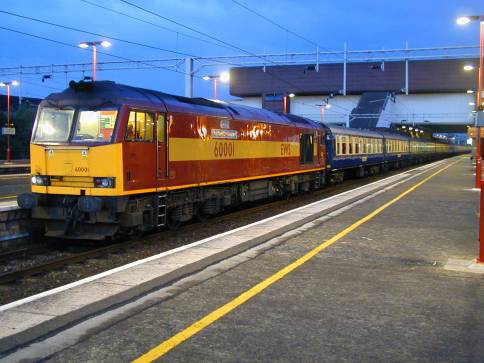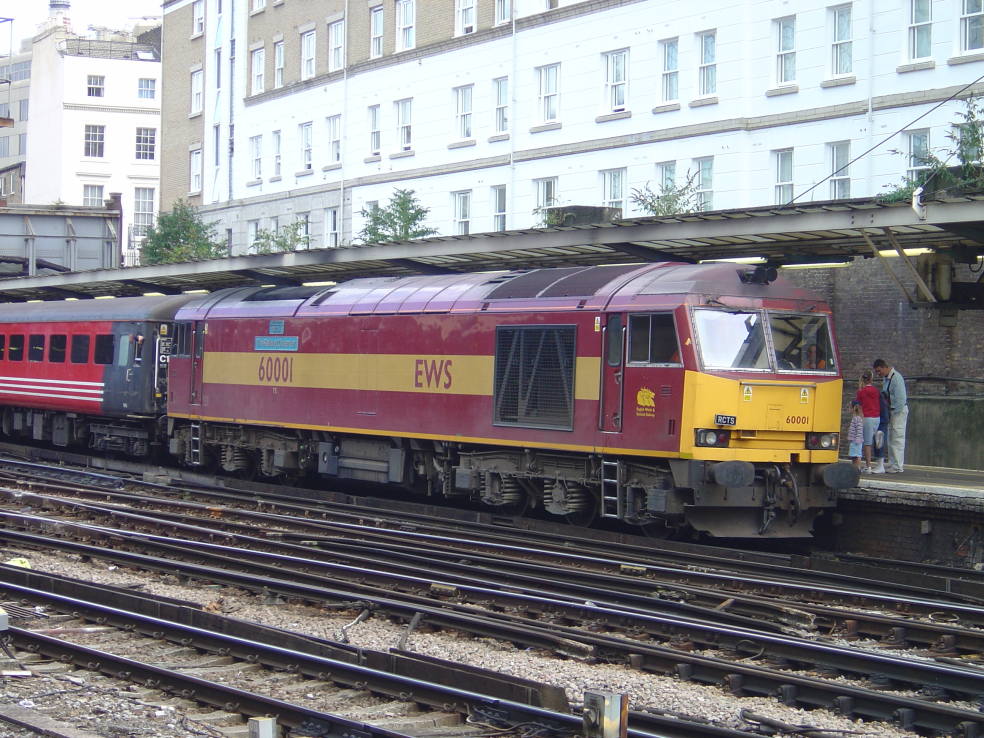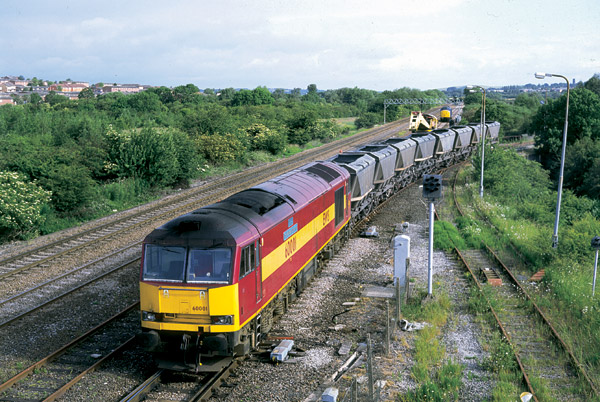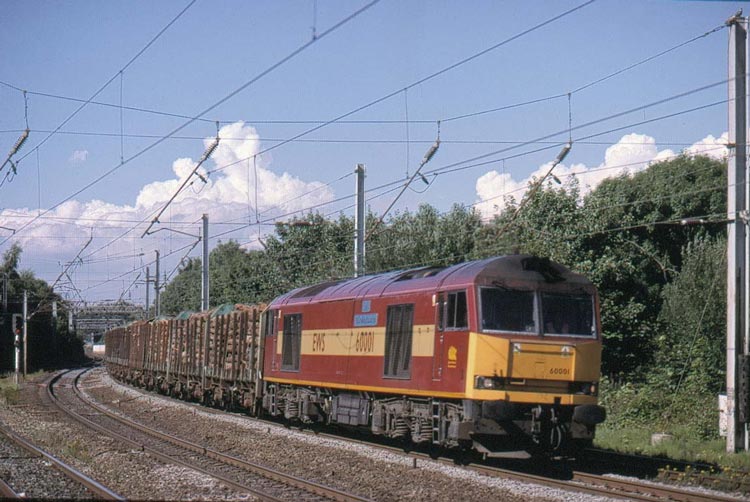Mock-Up and Delivery
The one hundred Class 60s were all built at the Brush Traction factory at Loughborough, for Trainload Freight, and 60001 was the first to be delivered. After a formal handing-over ceremony on 30th June 1989, it left Loughborough light locomotive to begin testing in the charge of the Railway Technical Centre.
Works Number BEM 903/89 was allotted, BEM standing for Brush Electrical Machines. The design code for the class at the time of construction was 60-0AA. The only amended design code subsequently issued applies to those locomotives that have increased fuel capacity, up from 4546 to 5225 litres; 60001 has not received this modification.
Handover ceremony
Commissioning and Trials
The early problems with the class were well publicised, with numerous faults being reported in the early days. As a result, the first sixteen class members were used principally for driving and fitter training pending a recall to the Brush factory for retrospective modifications to be completed. Accordingly, 60001 was not finally accepted into traffic until August 1991, when it was allocated to Stewarts Lane depot (SL) in its FASB Construction Pool.
Naming ceremony
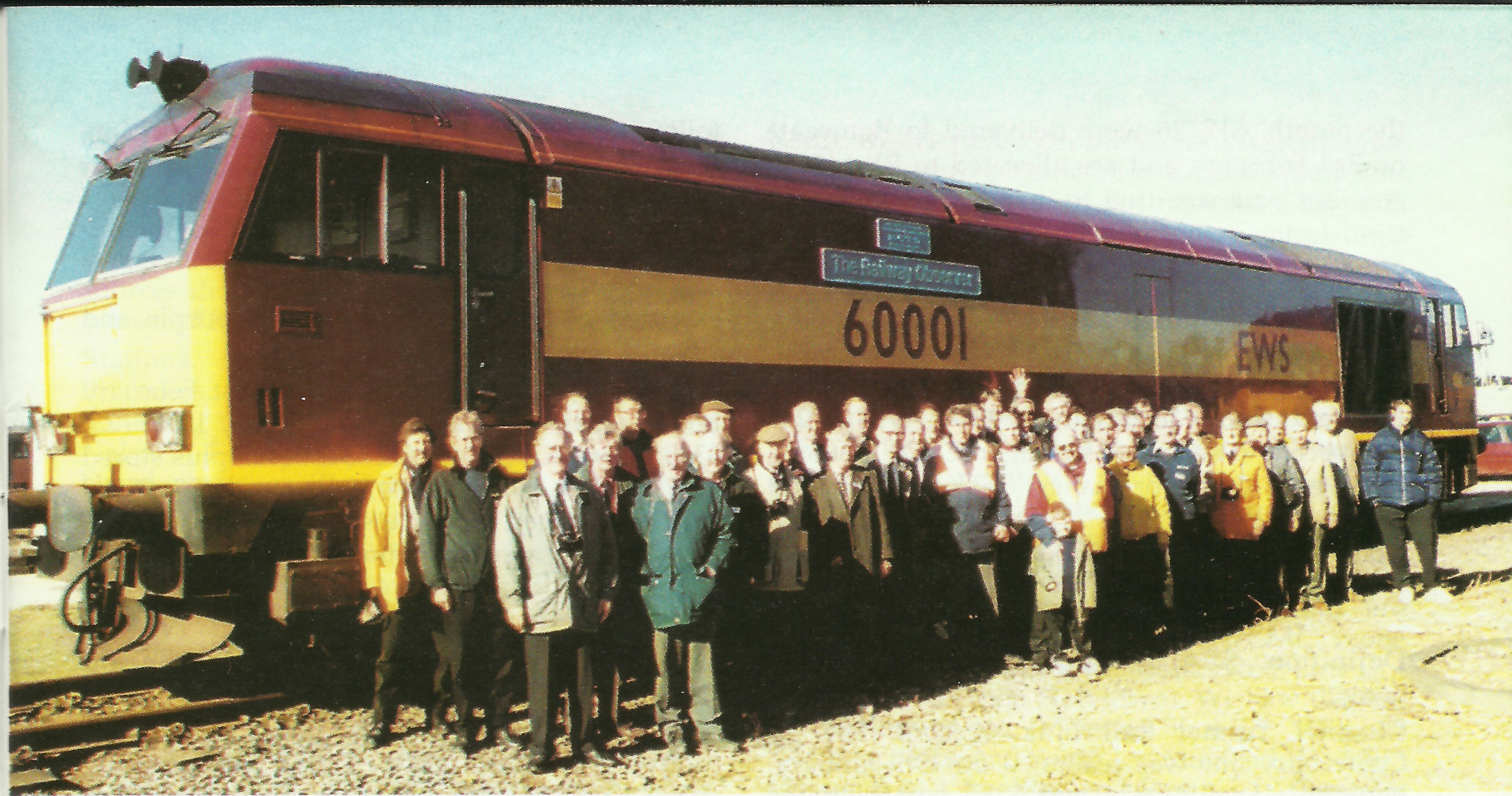

EWS class 60 locomotive 60001 was named The Railway Observer at Toton TMD on 23rd February 2001, seven years to the day since The Railway Observer nameplates were unveiled on 37890 at Hither Green depot. The RCTS President and Chairman, together with 36 members, gathered for the ceremony. 18 branches were represented as well as the Management Committee and other Society Officers.
A full description of the naming ceremony is given in The Railway Observer (RO) April 2001, pages 188 and 189; the latter page also has a photograph of 60001 with its original livery and nameplates while it was undergoing trials prior to acceptance into service.
A photograph of the group attending the naming ceremony is included in RO March 2001 on page 107.
As in the case of 37890, 60001 has a secondary plate, which this time is fitted above the main nameplate; both plates were fitted at the same time. The secondary plate is inscribed
The Journal of the Railway
Correspondence and Travel Society
RCTS
www.rcts.org.uk
The text on this plate is all in upper case, using a smaller font except for RCTS which is in larger font, except for the final line which gives the society’s website address in lower case. 60001 is unique among EWS locomotives in having a website address on a nameplate and is also the only class 60 to have nameplates with pale blue background.
1990 - 1997
At the end of March 1994 this pool code was changed to ESAB Stewarts Lane Class 60 when the British Rail freight operation was split into three divisions prior to privatisation. Stewarts Lane was included in the newly established Trainload Freight Southeast Division, later Mainline Freight. In March 1996, ownership transferred to English Welsh & Scottish Railway (EWS) on the privatisation of British Rail. 60001 remained at Stewarts Lane in pool ESAB. In September 1996, it was transferred to pool ENAN Class 60, Toton although still allocated to Stewarts Lane but was transferred to Toton in the following month.
1997 - 2001
In September 1997, EWS centralised the allocation of class 60 locomotives at Toton, with other class members from Cardiff Canton, Immingham and Stewarts Lane transferred to Toton pool ENAN. The code of this pool was changed to WCAN class 60, systemwide in a reorganisation of the EWS pools in January 1999.
In November 2000, EWS moved back to the previous system of allocating locomotives to specific depots for maintenance purposes and 60001 was moved to Thornaby (TE) in pool WCAT, designated Class 60 North Eastern (North). This allocation still applied at the time of naming.
All members of the class were allocated names from the outset, and the plates were fitted by Brush before the locomotives were delivered. Those expected to go to the Construction sub-sector were to be named after British mountains but, as the first of its class, 60001 was an exception in being named Steadfast. After EWS took over, names were removed from many of these locomotives and 60001 was so treated in September 1996.
The standard Trainload Freight ‘triple grey’ livery was applied to 60001 when built, together with the correct Construction sub-sector decals, formed of blue and yellow squares. As a point of interest, it can be seen from old records that some of the class were allocated to duties differing from those envisaged at the time of ordering and, as a result, carried the ‘wrong’ names and sub-sector markings. Subsequently, these decals were replaced with Mainline Freight logos, this change being reported in the June 1996 RO. 60001 was then one of the earlier recipients of the now standard EWS red and yellow livery, in its revised form with the letters EWS on the yellow band and the EWS logo on the right-hand cab side. The change was reported in the April 1997 RO.
2001-2012
60001 remained allocated to Thornaby (TE) until May 2004 when Immingham (IM) took over maintenance responsibility for the whole class.
60001 failed with a ‘burst’ engine on the evening of 24th February 2006 while working a loaded MGR on the Liverpool Gladstone Dock to Fiddlers Ferry coal circuit. It was hauled dead in tow to Warrington and subsequently moved to Toton where it was stored on 2nd March in pool WNTS – EWS tactical stored, depot code WQ. Damage to the engine is thought to be ‘terminal’ so 60001 is unlikely to work again unless a replacement engine becomes available.
In May 2007 most stored locomotives with depot code WQ were reallocated to depot code TO; 60001 remained in pool WNTS. After being stored in Toton depot sidings for almost two years, 60001 was moved into the Compound on 26th February 2008 and has since been joined there by other stored class 60s.
On 3rd September 2010 DB Schenker, formerly EWS, put 103 stored locomotives up for sale by tender. These included 60001 and 19 other members of the class, the first time that class 60s had been offered for sale. On 23rd September these 20 class 60s were all reallocated to pool WNXX – DBS stored unserviceable (the company was no longer using the more appropriate pool WNZX – locomotives for disposal). They were later withdrawn from sale; it is assumed that any offers didn’t meet the reserve price.
A large collection of photographs taken during this period is available to view in the Galleries section of this page.
After 2013
Things became more promising on 7th August 2012 when it was reported that 60001 had been added to the class 60 overhaul programme and reallocated to pool WNWX – DBS mainline locomotives stored for heavy repair, initially with an expected OK date at the end of March 2013. Then on 15th October it was moved from Toton Compound into the main depot area. 60001 was added to the class 60 re-engineering programme in 2013. Unlike other locomotives in this programme, which had their nameplates removed, 60001’s nameplates remained fitted until late February 2013 when it was taken inside the depot.
It was repainted at Toton in DB Schenker red livery, emerging from the paint shop in mid-August and starting loaded main line tests at the end of that month before returning to service in early September, about seven and a half years after what had appeared to be a catastrophic engine failure. The Schenker part of the logo was removed in 2019, after the company had rebranded itself as DB Cargo in Britain, with the small DB logo being retained.

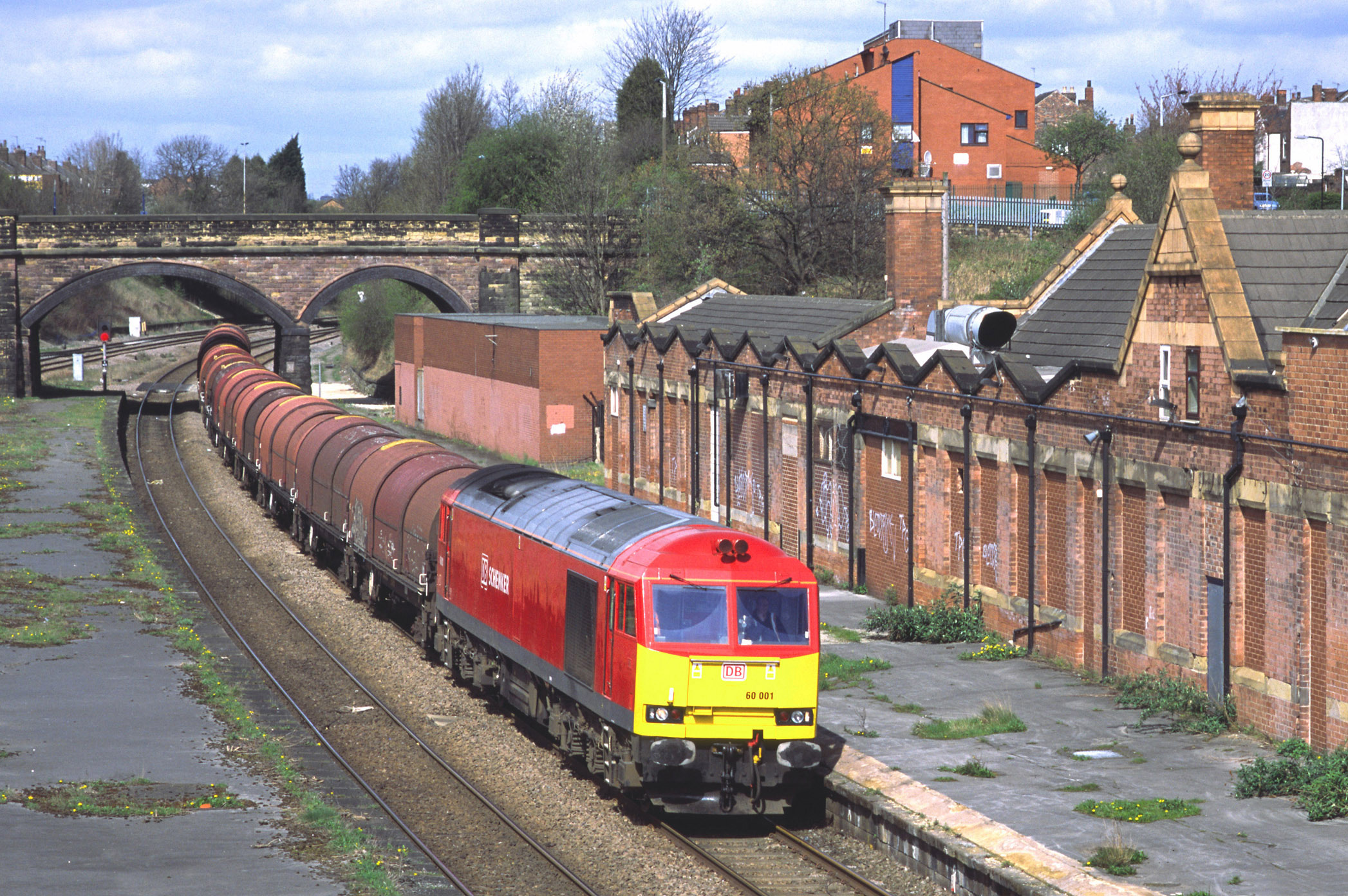
60001 Logs
Following the naming of 60001 at Toton on 23rd February 2001, Bob Wallen, Dave Hinde and Andrew Lait attempted to maintain as complete as possible a record of the workings of the locomotive. Acknowledgements are due to those RCTS members, and many others, who have contributed the information that has enabled the following to be put together on behalf of the Society; also to Freightmaster and its editor Mark, without which many train descriptions would not be possible, and to 60gen, other e-mail groups and the Class 60 Data Site.
The logs are downloadable as .pdf files listing each year’s known workings.
Galleries
Coal
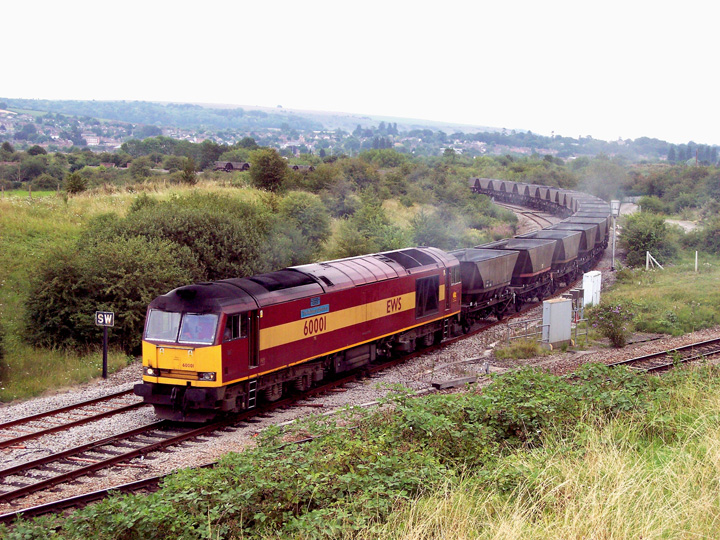
Engineering and Infrastructure
Enterprise and Intermodal
Iron and Steel
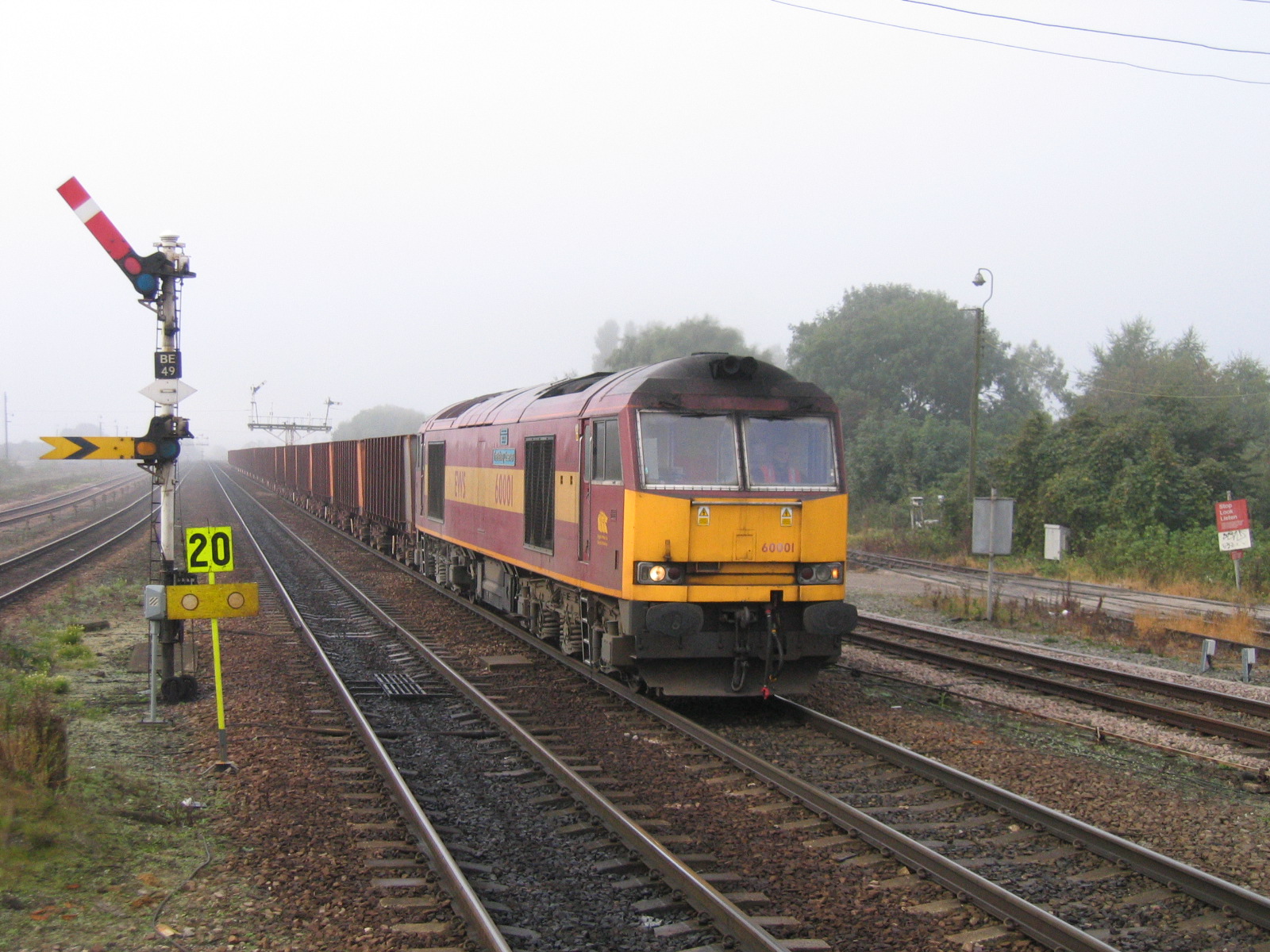
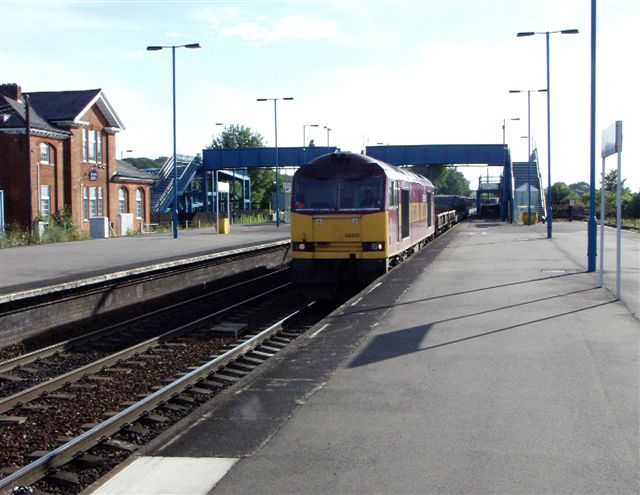
Limestone, Gypsum, Stone and Sand

Oil, Fuel and Bitumen Tanks
